The wildlife park Schorfheide is a nice excursion destination close to Berlin and located within a beautiful woodland area in the biosphere reserve Schorfheide-Chorin. Wide meadows surrounded by forests characterize the landscapes of the wildlife park. This unique environment became a home not only for all the animals in the vast animal enclosures, but offers also an ideal habitat for all the wildlife of the surrounding country. I have visited the wildlife park Schorfheide on a beautiful summer day and tell you more about it in this blog entry.
The wildlife park Schorfheide
Extensive landscapes. Native wildlife. And endangered farm animals. I would describe the wildlife park Schorfheide exactly like this in a few words. Surrounded by unique nature and located in the biosphere reserve Schorfheide-Chorin, I'm sure that all visitors in this wildlife park will have some amazing animal observations and spend a beautiful time there.
Apropos time. In the wildlife park Schorfheide you will indeed need plenty of time. With an area of 105 hectares and a hiking trail of about 7 kilometers, the wildlife park Schorfheide is quite large for a day trip.
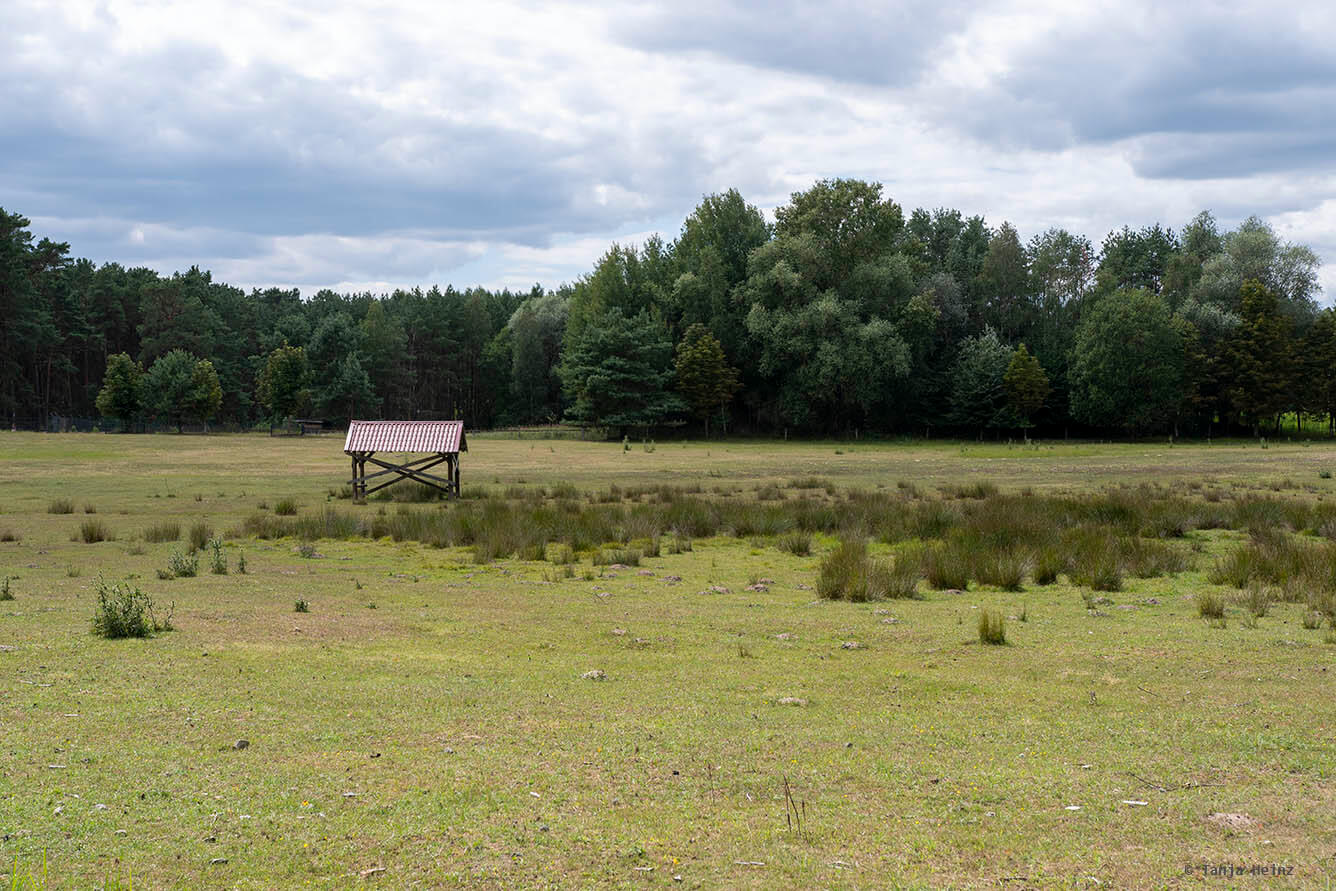
Information: If you are looking for another activity, just next to the wildlife park Schorfheide you can find the Kletterwald Schorfheide. It is just a short walk away from the wildlife park.
Especially worth to mention is here that the wildlife park Schorfheide is only home to wildlife which were or still are native to the biosphere reserve Schorfheide-Chorin like, for example, wolves, otters, red and fallow deer, but also wisents, lynxes or elks.
By all means, I was thrilled to explore all the native animals in the wildlife park Schorfheide. Particularly as it is located in the biosphere reserve Schorfheide-Chorin, because the forests of this biosphere reserve are one of the largest contiguous forests in Germany. And this just next to the capital Berlin! Some of these forests are listed as UNESCO World Heritage like the Beech forest Grumsin.
Nevertheless, although the wildlife park Schorfheide is surrounded by forests, not all hiking trails lead through a forest. There are also hiking trails surrounded by no or few trees.
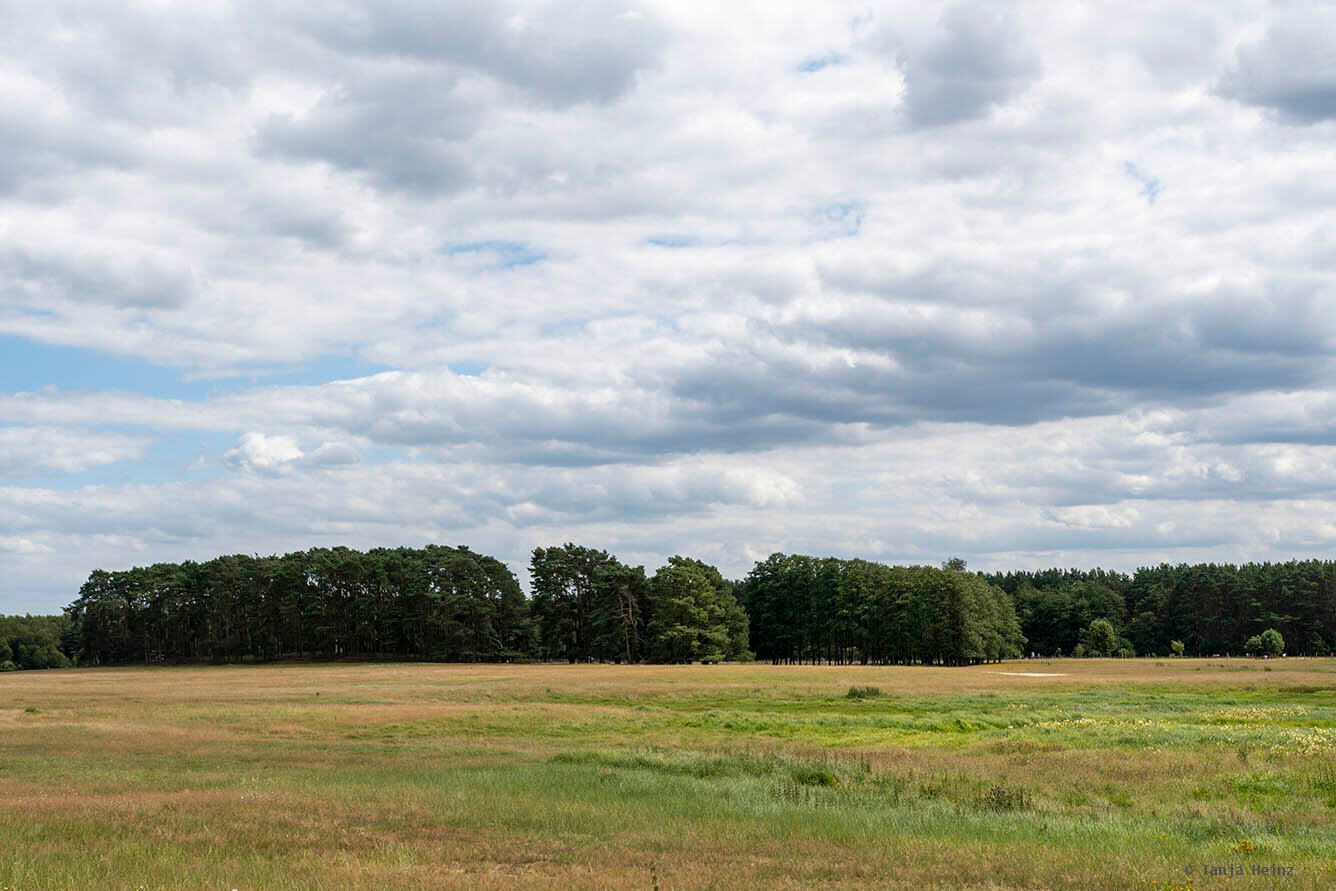

The wildlife park Schorfheide is extraordinarily interesting for a day trip, as there are numerous resting spots and picnic areas.
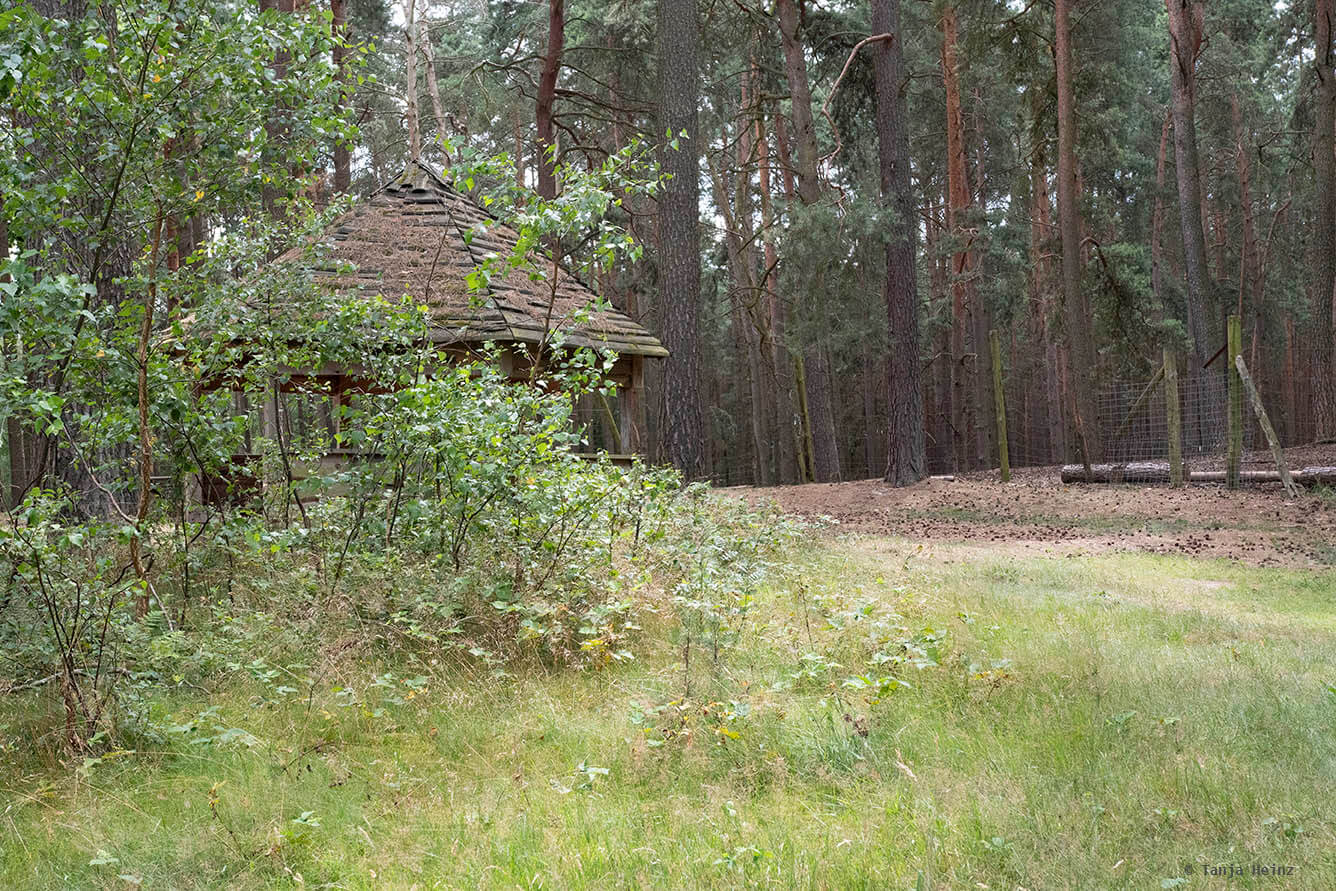
I visited the wildlife park on a sunny and partly cloudy summer day in July. It was still holiday time and numerous families with children came to the wildlife park on that day. Of course, the wildlife park Schorfheide is a great place for children. In the wildlife park children not only learn more about native fauna, but also find a place to run and play on the playground. The petting farm just next to the entrance might be of interest for some, as there it is allowed to stroke rabbits and goats.
I didn't stroke any of the animals, but I was watching them. A male blue peafowl was emitting some calls which are typical for these birds. As if this male was looking for attention. Or maybe, this blue peafowl was just disturbed by anything or anyone (maybe by me or any other visitor?).
Later I saw this male blue peafowl again in the rabbit hutch next to a female.
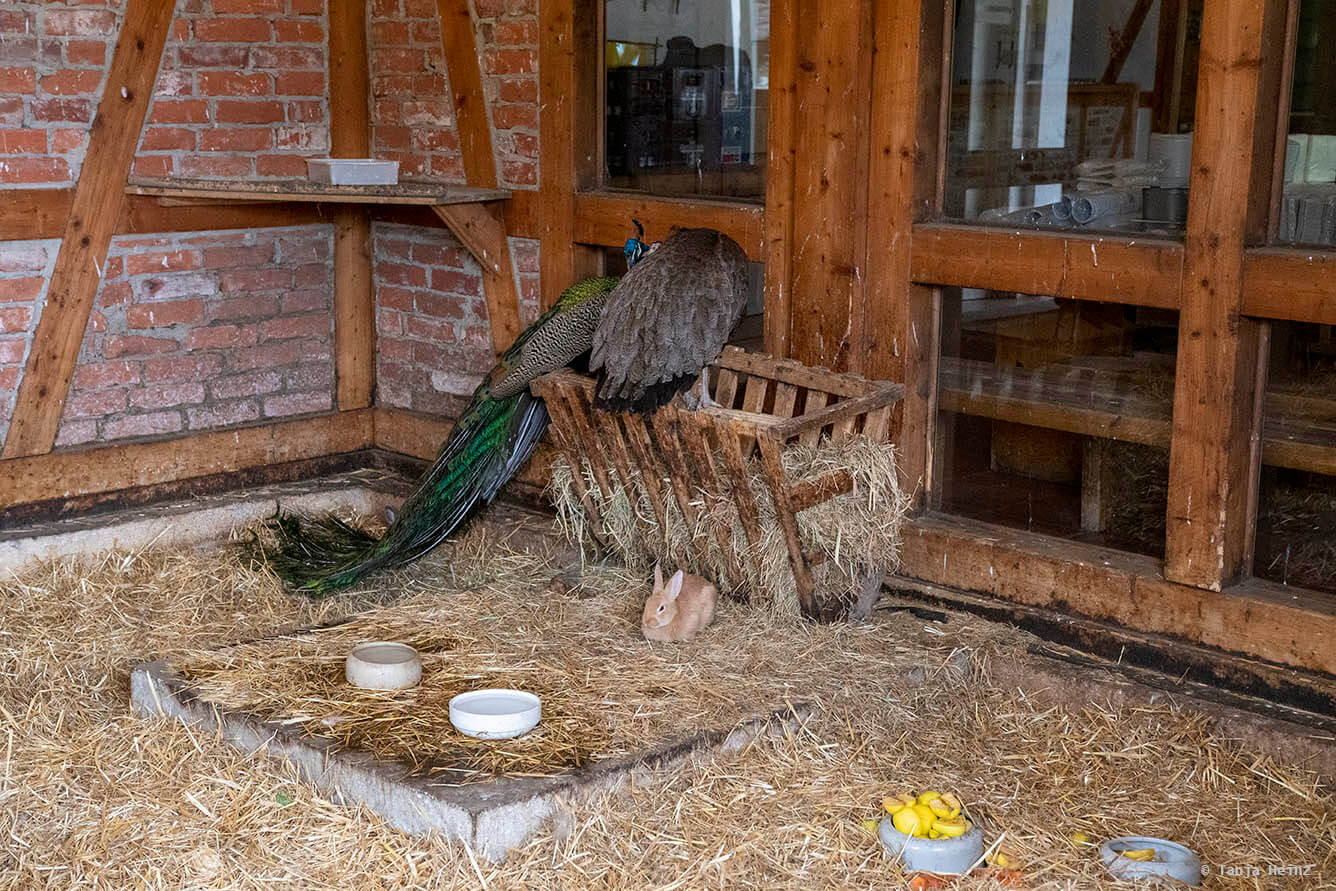

Information: The rabbit hutch and the petting farm are just next to the visitor center in the entrance area. There is also a small restaurant. But if you do not wish to eat in the restaurant, there are also many seating possibilities where you can eat your own food.
One thing I very liked in the wildlife park Schorfheide were the vast enclosures for the animals.
The enclosures were so big that it was necessary to approach all of these enclosures with patience and time in order to see at least any animal. I passed some enclosures twice or three times. And still, I couldn't spot all of the animals in the wildlife park Schorfheide.
However, as an attentive visitor I spotted some more animal I hadn't expected to see like, for example, this red-backed shrike young (Lanius collurio).
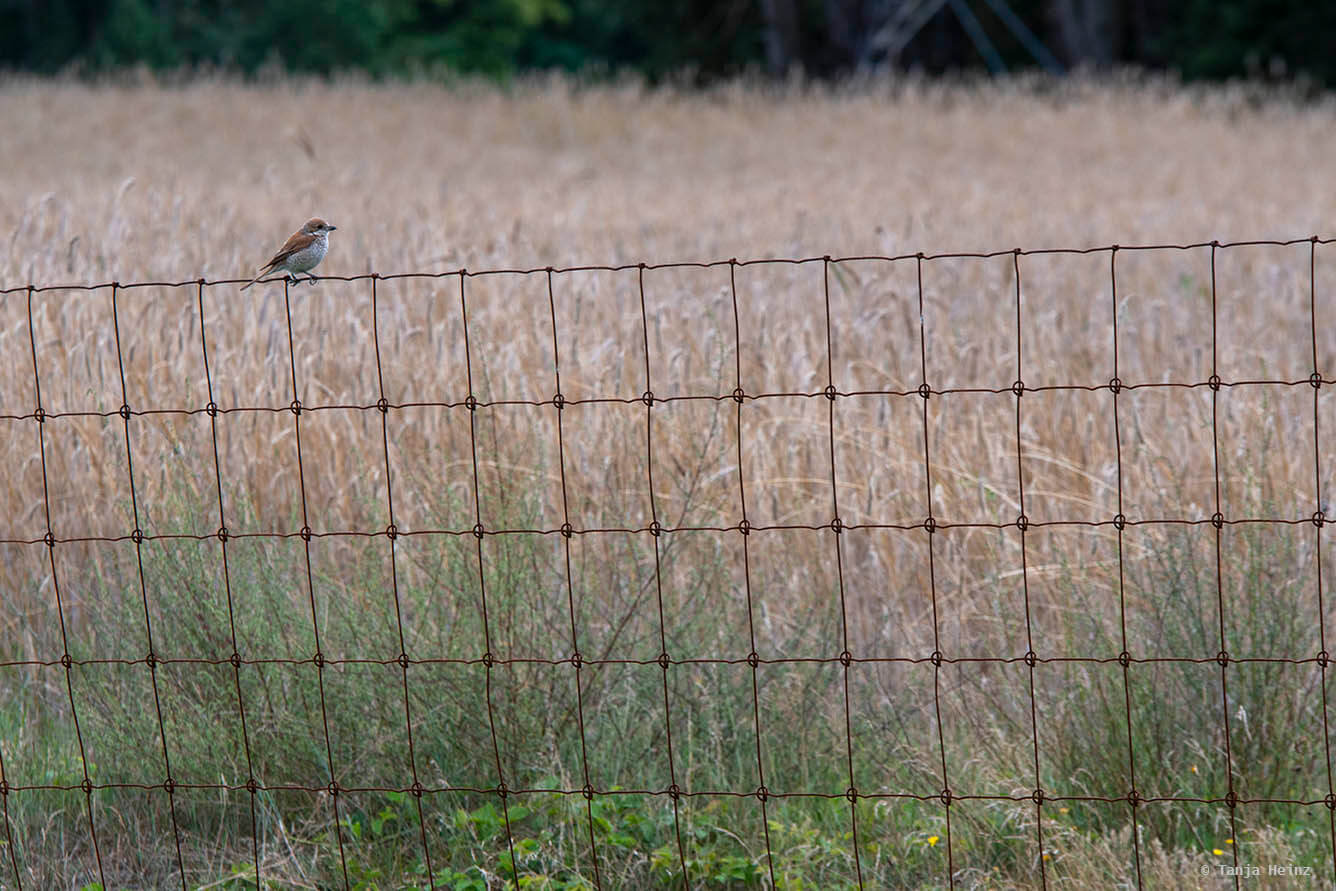
I also spotted quite many swallows.
Therefore, the wildlife park Schorfheide is not only a beautiful recreational area for nature-loving people, but also a great place to encounter and learn more about native fauna. The landscapes which are characterized by forests and meadows is thus not only a home for all the animals in the vast enclosures, but also a habitat for numerous other wild animals.
If there is still any wild place out there in Germany, I felt like being at one of these wild places in the wildlife park Schorfheide. At least a little bit. However, as a visitor interested in animal welfare, I was happy that the animals in the wildlife park had so many options to withdraw.
In the following paragraph I write more about all the animals I saw in the wildlife park Schorfheide.
Information: There are more wildlife parks around Berlin with mainly native fauna like, for example, the animal park Kunsterspring or the wildlife park Johannismühle. I have visited these two wildlife parks and can recommend a visit.
Animals in the wildlife park Schorfheide
Pyrenean mountain dog
Do we need wolves in Germany? What are the possible pros and cons for the protection of wolves? Is there a peaceful life of humans and wolves next to each other possible?
In the wildlife park Schorfheide I learned more about a solution how humans and wolves could live next to each other. This solution involves Pyrenean mountain dogs, as grazing livestock of farmers is exposed to attacks by wolves. But what to do against these attacks? Many farmers think that the best protection against the wolf is to take them. Thus, it was especially interesting for me to learn more about a method which is more in accordance with animal welfare and conservation. And this method involves Pyrenean mountain dogs.
Pyrenean mountain dogs are big and strong dogs. With their medium-length and white fur they are very charismatic animals. I immediately remembered the dog project in Australia with Maremma sheepdogs in order to protect little penguins against their predators like foxes.
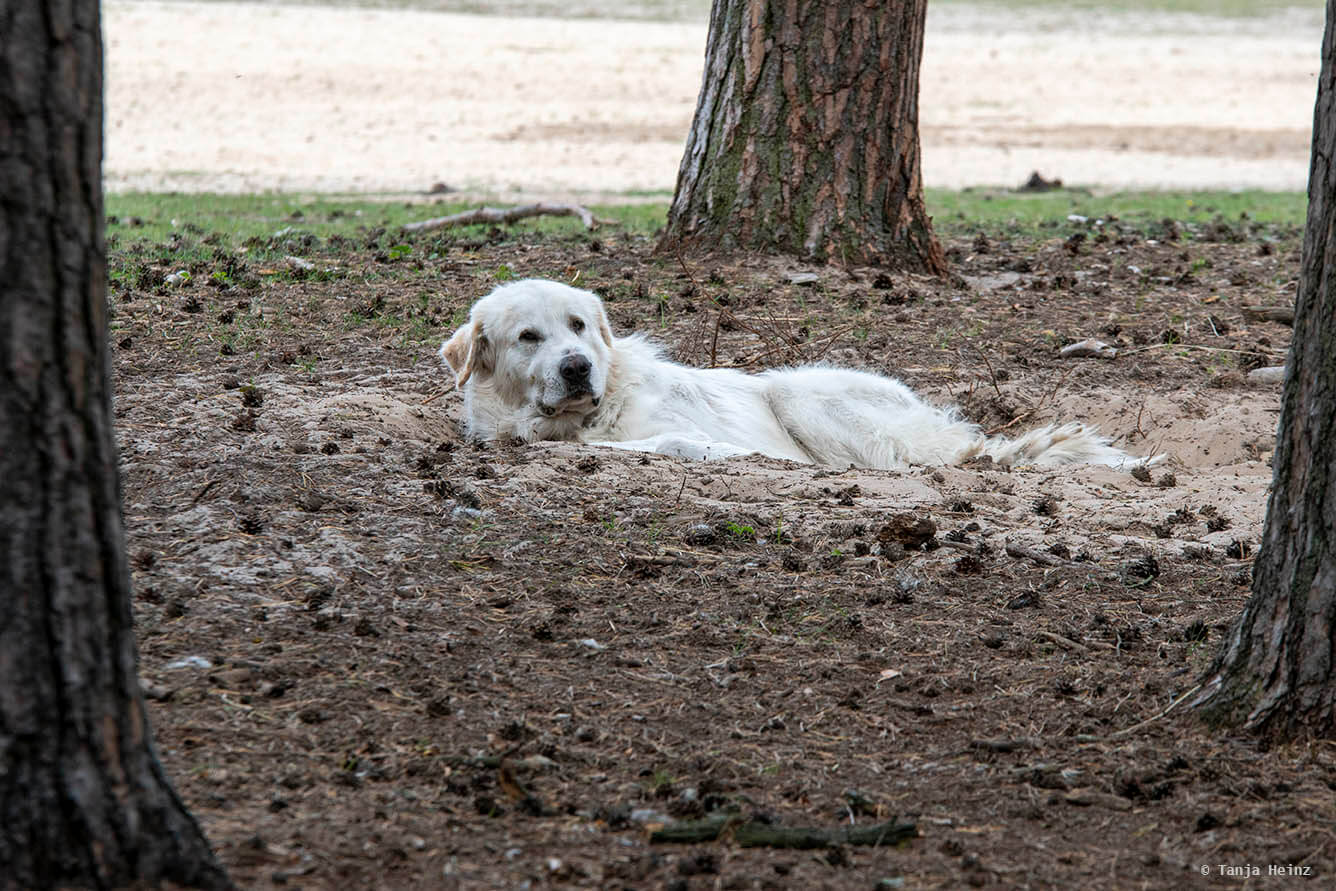
Nevertheless, debates about the protection of the wolf can be quite emotional. As not everyone is on the wolf's side.
A dog like the Pyrenean mountain dog, however, can be used as a livestock guardian dog. The dogs are born into a cattle herd or sheep flock and view themselves as a conspecific of a herd or flock, respectively. In this way the Pyreanean mountain dog's duty is to protect the livestock against wolf attacks.
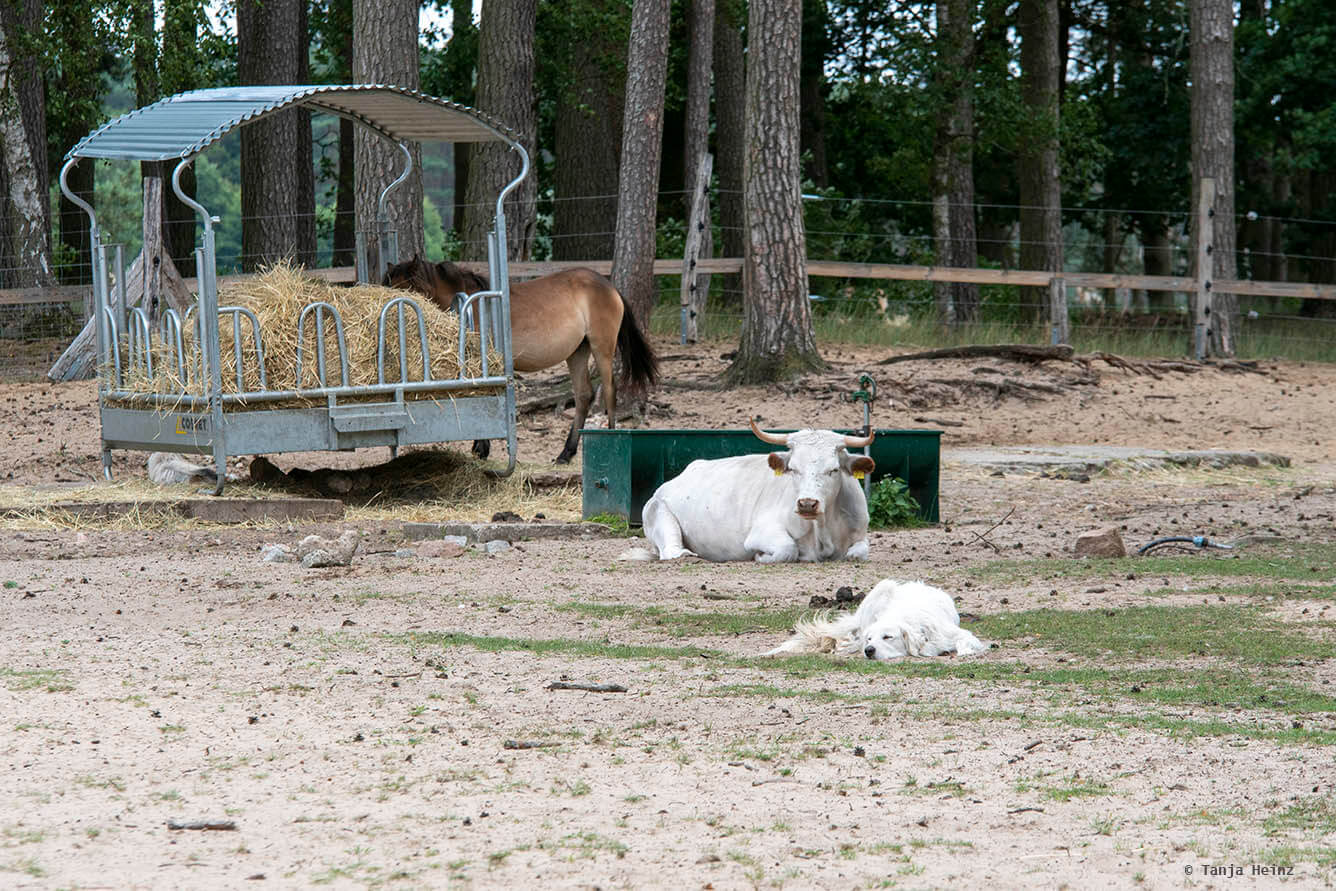
Furthermore, electric fences and other fences can be used to improve precautionary measures. A chain-link fence could further strengthen all precautionary measures in order to prevent wolves from digging under a fence. In the wildlife park Schorfheide you can have look at how such a fence could look like.
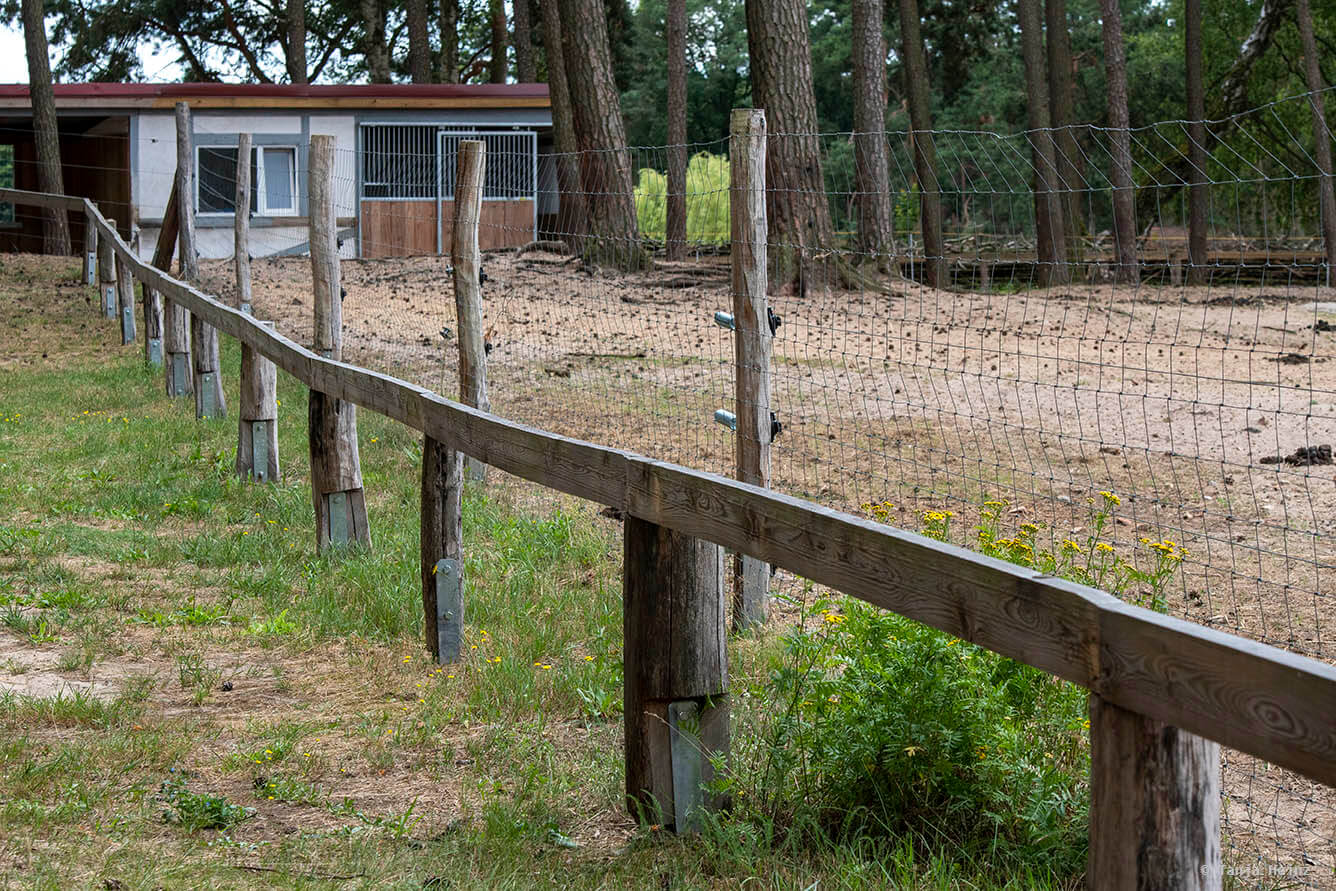
Important: Pyrenean mountain dogs and livestock are not allowed to feed or to stroke. Furthermore, they need a quiet environment. Therefore, it is very important to not disturb these animals. All dogs in the wildlife park must be kept on leads!
Eurasian wolf
Think about it. About 150 years ago Eurasian wolves were widely distributed in Europe. But because of intense hunting, Eurasian wolves disappeared in Germany. Thus, shouldn't we account ourselves lucky that Eurasian wolves didn't become completely extinct?
I'm one of those who is concerned about the biodiversity in densely populated Germany. As the Eurasian wolf is part of this biodiversity, again, shouldn't we consider ourselves as lucky that the wolf comes back to Germany? Especially as there are - as it seems to be - good solutions to protect livestock against wolf attacks.
Anyway, in the wildlife park Schorfheide I spotted three wolves in an enclosure and I observed all the other visitors around. I indeed could not perceive any fear or anger. Quite the opposite. Instead, I looked at the people and could observe admiration, delight and enthusiasm for these animals.
Even the children appear to be full of joy.
Although I know that animals in enclosures can be quite controversial, in some cases I think it is important that people can get a chance to get to know a mysterious animal. At least a little bit. I think it is so important that people start to care for more animals. But how to reach this? Maybe through animal encounters like this?
I don't know. However, the wolves didn't seem to take an interest at all in the people in front of the enclosure. They just continued with their afternoon sleep...
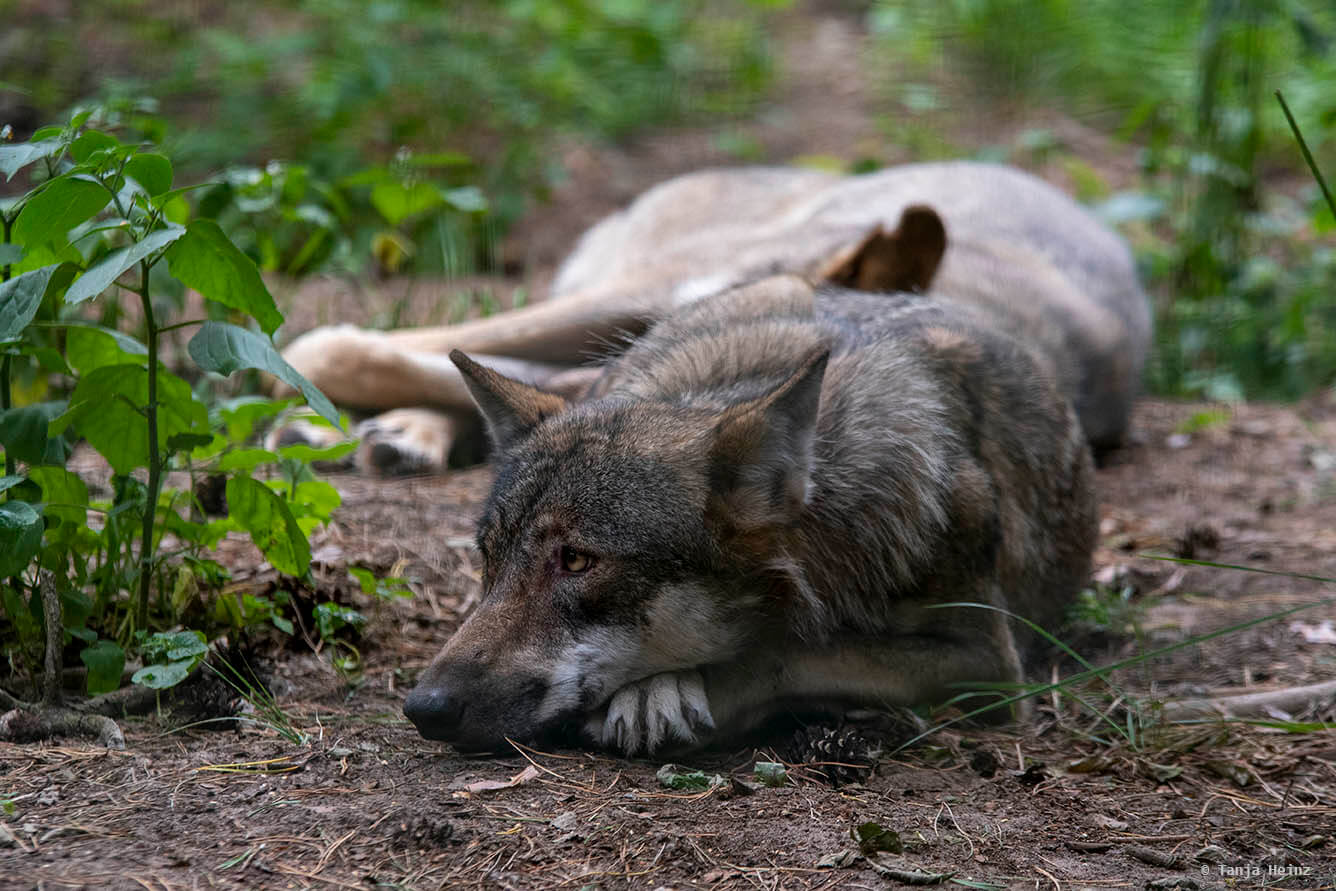
Interesting: Did you know that Eurasian wolves are able to eat 10 kilograms of meat in one meal and that they can reach a speed of up to 65 km/h? It is also interesting to know that wolves can reach an age of 19 years in the wild.
Przewalski’s horse
I don't know why. But Przewalski's horses have something I cannot describe. They are so beautiful and admirable. Their beauty just makes me gush over these horses. Is it their graceful gait? Or their gentle expression? Or maybe it is just the fact that Przewalski's horses became extinct in the wild in 1970?
I don't know, but yes, you have read correctly! Przewalski's horses became extinct in the wild and in the past!
However, thanks to numerous reintroduction projects of zoological institutions, there are Przewalski's horses again in the wild. There are not many places with wild Przewalski's horses left in the wild, but after all there are some of them for example in Mongolia.
In the past, Przewalski's horses were widely distributed in Europe and Asia. Now, if you want to see one of these beautiful horses, the best chances to see them are in wildlife parks or any other zoological institutions.
I spent some time with the Przewalski's horses in the wildlife park Schorfheide and admired their beauty.
With their erect standing manes and their sand-colored and partly reddish-brown coat, Przewalski's horses harmonize with the surrounding landscapes. I was not the only one who was attracted by the beauty of these animals. Numerous other visitors seemingly couldn't get enough of these amazing Przewalski's horses.
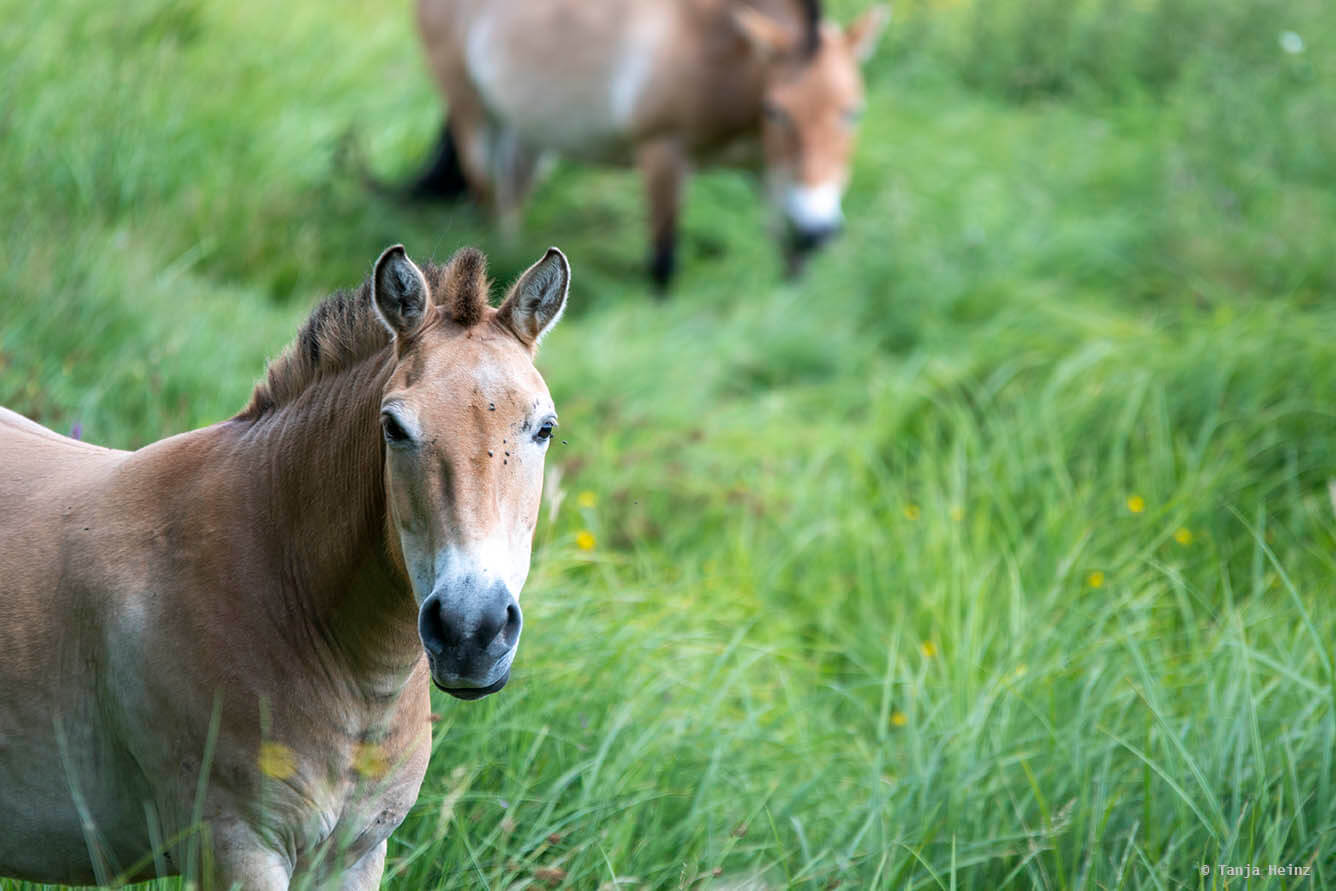
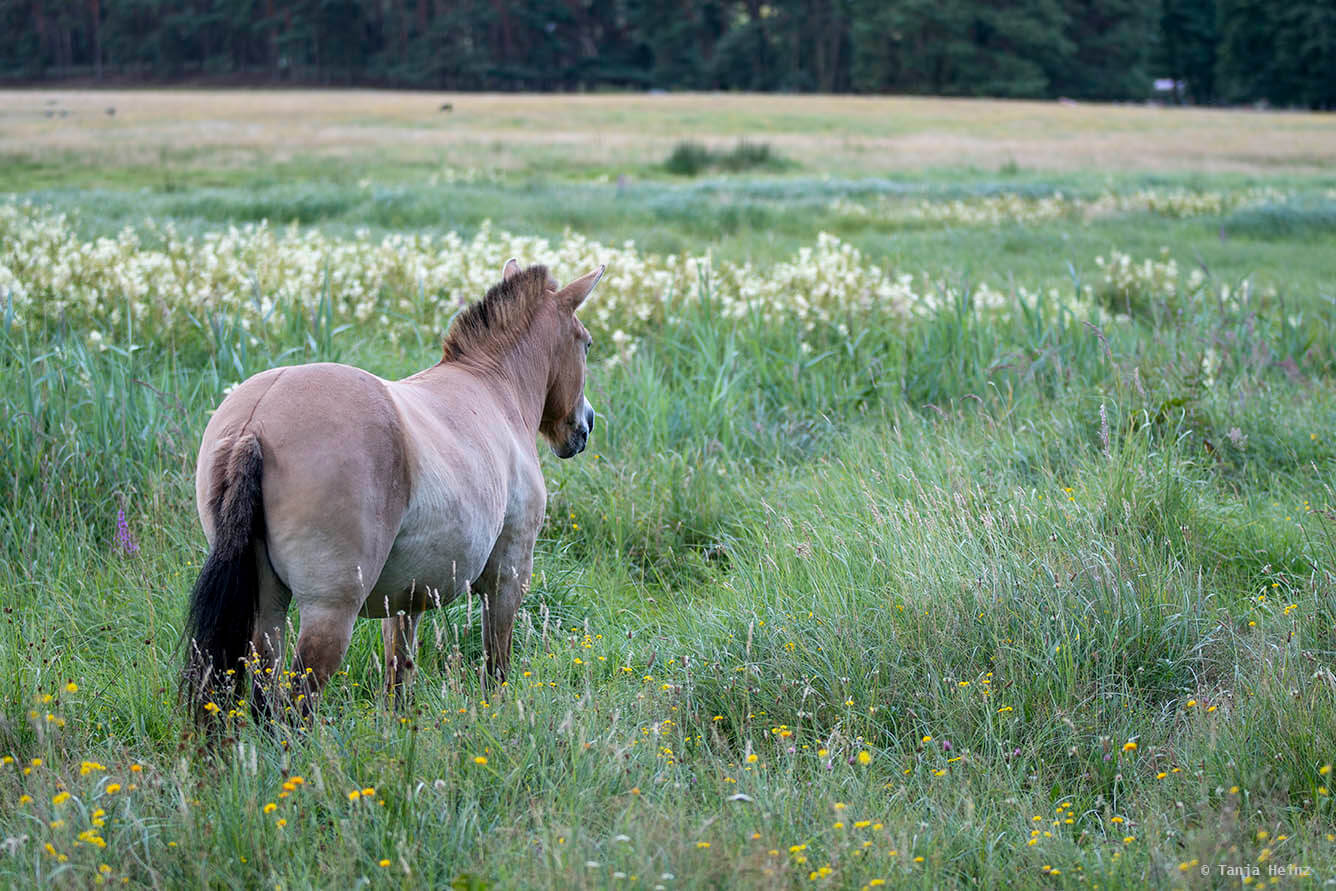
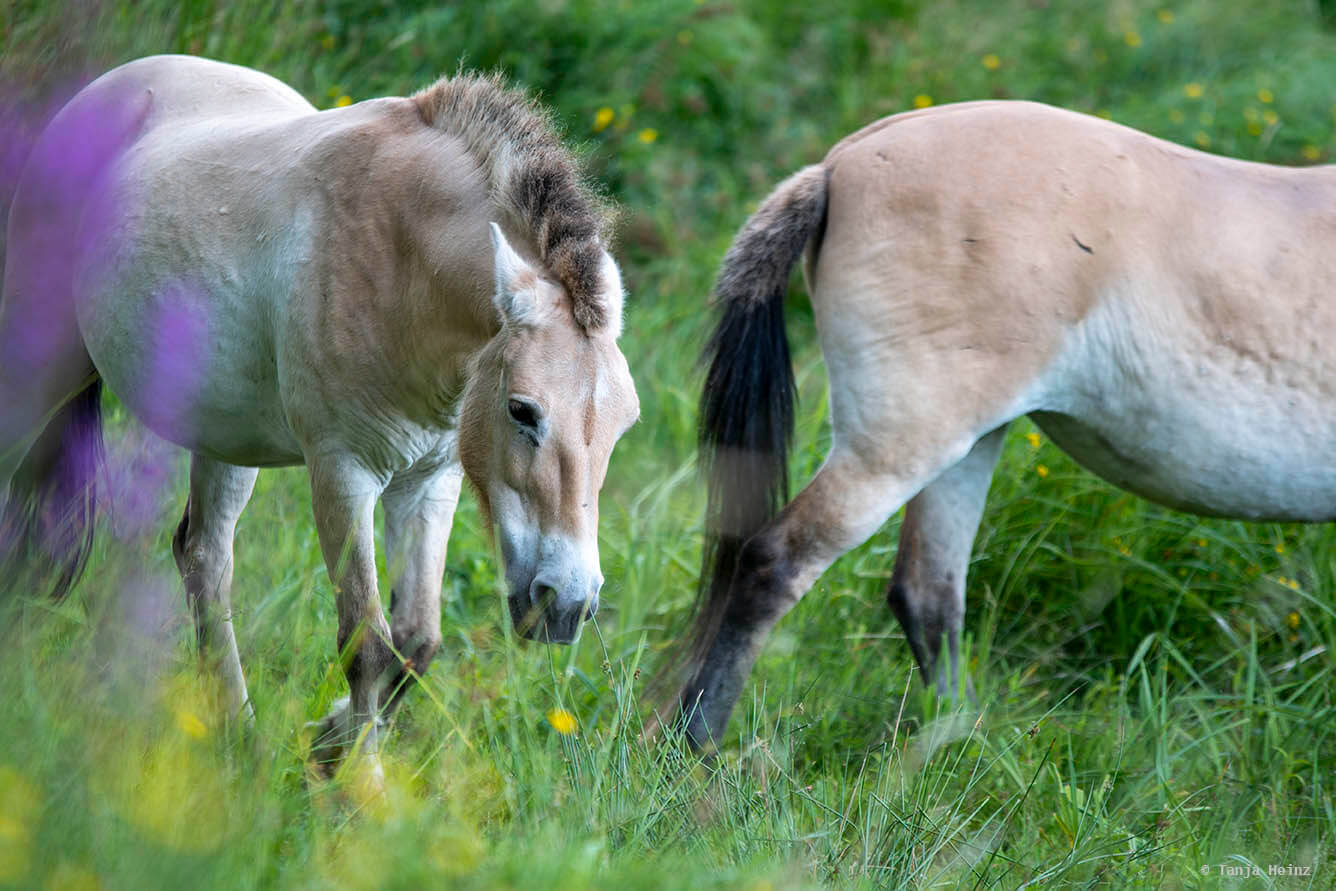
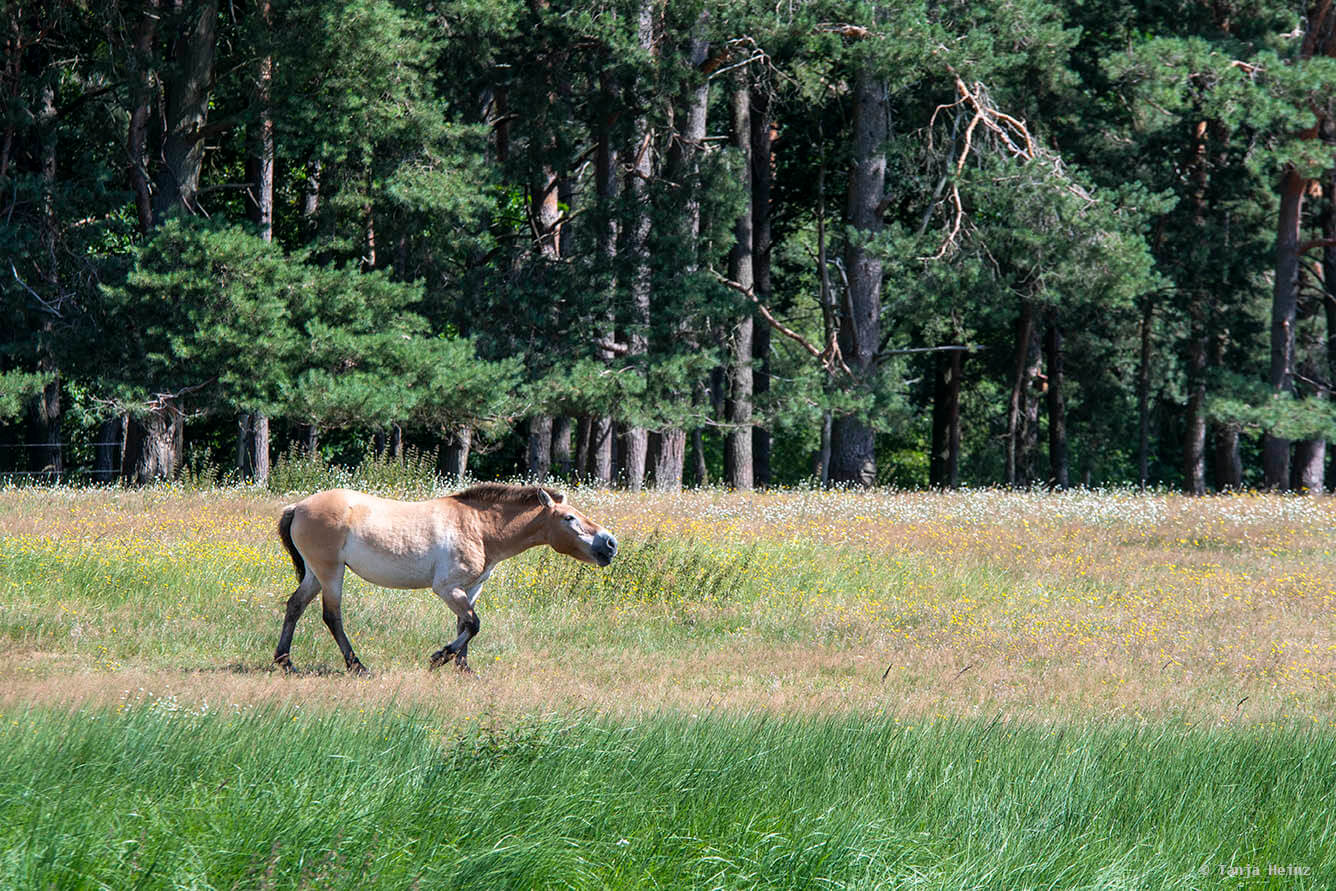
Information: The Tierpark in Berlin is involved in a reintroduction project. You can find more information about this project on their website. With a bit of luck, it is also possible to see Przewalski's horses in Berlin in the Döberitzer Heide.
Pomeranian coarsewool
The Pomeranian coarsewool is probably less spectacular like the Przewalski’s horse, however, by all means not less important.
The Pomeranian coarsewool is a breed on the Red List. As the name suggests, the Pomeranian coarsewool is a domestic sheep country breed of the Baltic Sea region in Mecklenburg-Western Pomerania. But also, Poland is one of this sheep's original origins.
The Pomeranian coarsewool is an animal which is not sensitive to changing weather conditions. Especially in the Baltic Sea region with its rough coastal climate, the Pomeranian coarsewool is well adapted to such an environment.
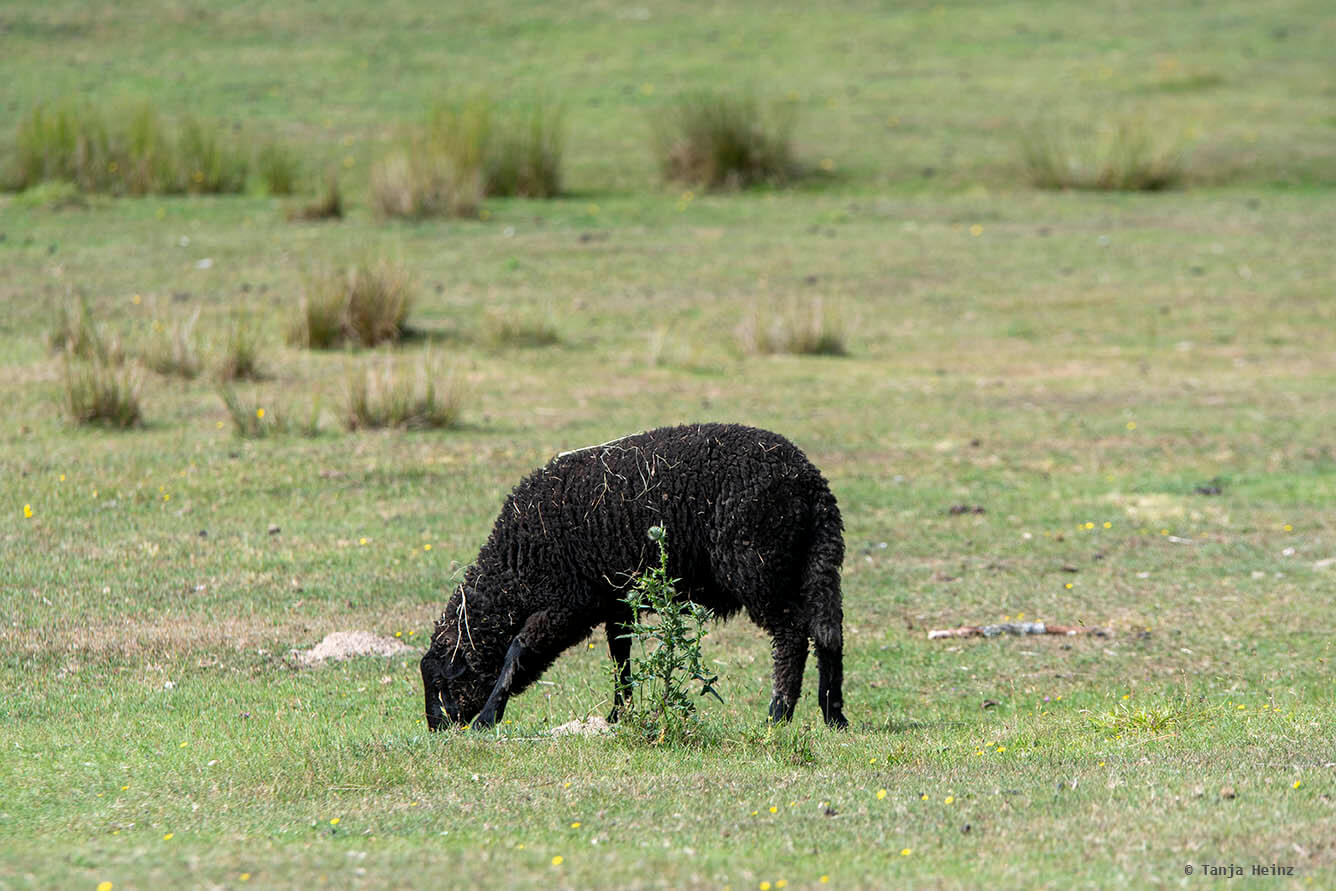
Skudde
Just next to the Pomeranian coarsewool are the skuddes.
In Berlin there are skuddes on the Tempelhofer Feld. On the Tempelhofer Feld the skuddes are used to keep the vegetation short in a sustainable way. The skudde is like the Pomeranian coarsewool a domestic sheep country breed. As well, skuddes are on the Red List and an endangered livestock breed.
So far, on the Tempelhofer Feld I had observed skuddes only from afar. But in the wildlife park Schorfheide I could have a closer look on these domestic sheep.

Red deer
It was extraordinarily quiet at the red deer enclosure. I was alone in front of the enclosure and as quiet it was around me, as quiet it was in the group of red deer. No unnecessary movement. Maybe one wink here or one change of foreleg position there. Only one animal was at the feeding site and eating some hay.
It was quiet and I could listen to the trees how they were moved from one side to the other by the wind.
And then there was some more action.
One red deer stood up, walked to the next waterhole and drank some water.
How beautiful it was to see this amazing red deer!
It was a male with antlers. Among red deer only males develop antlers.
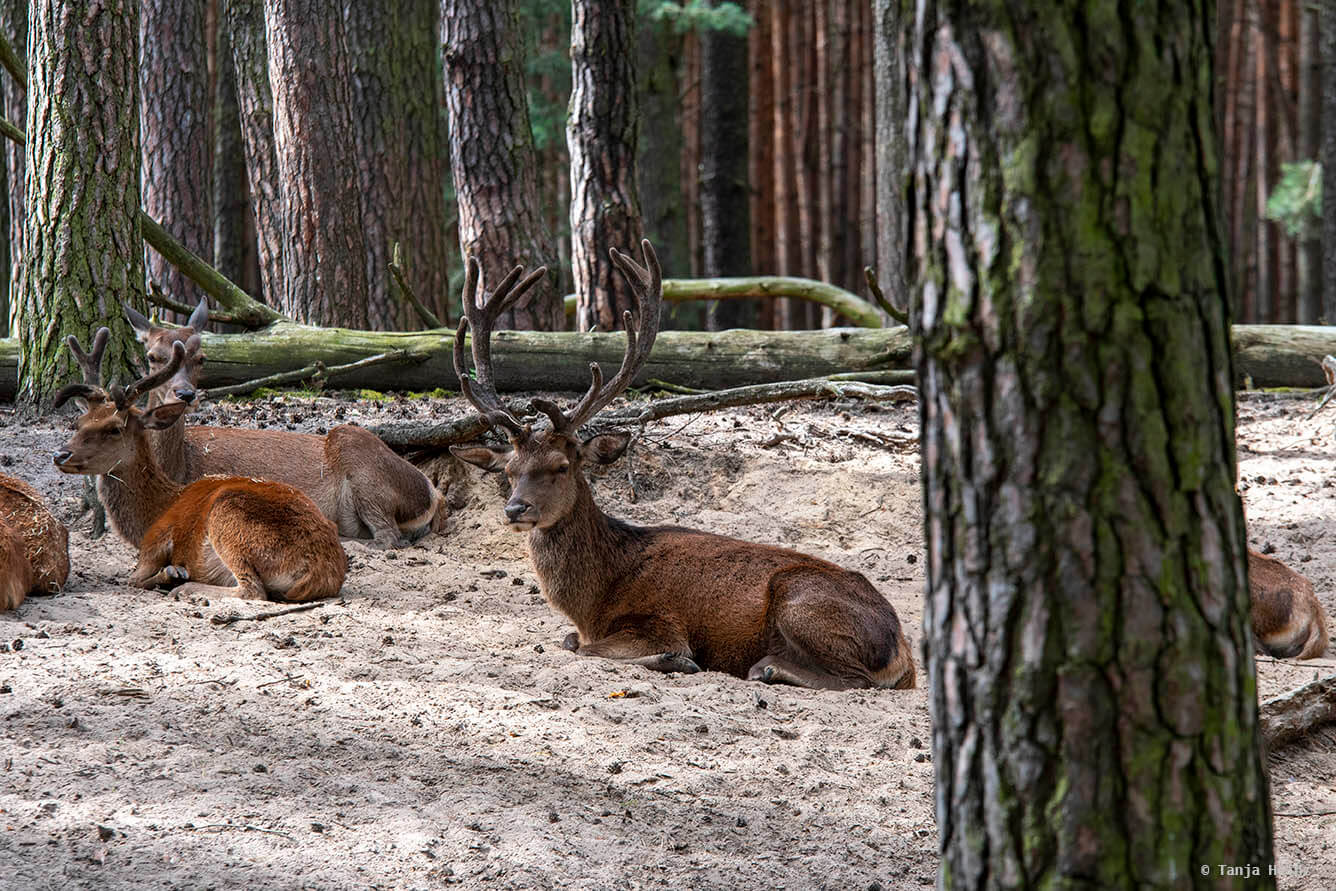
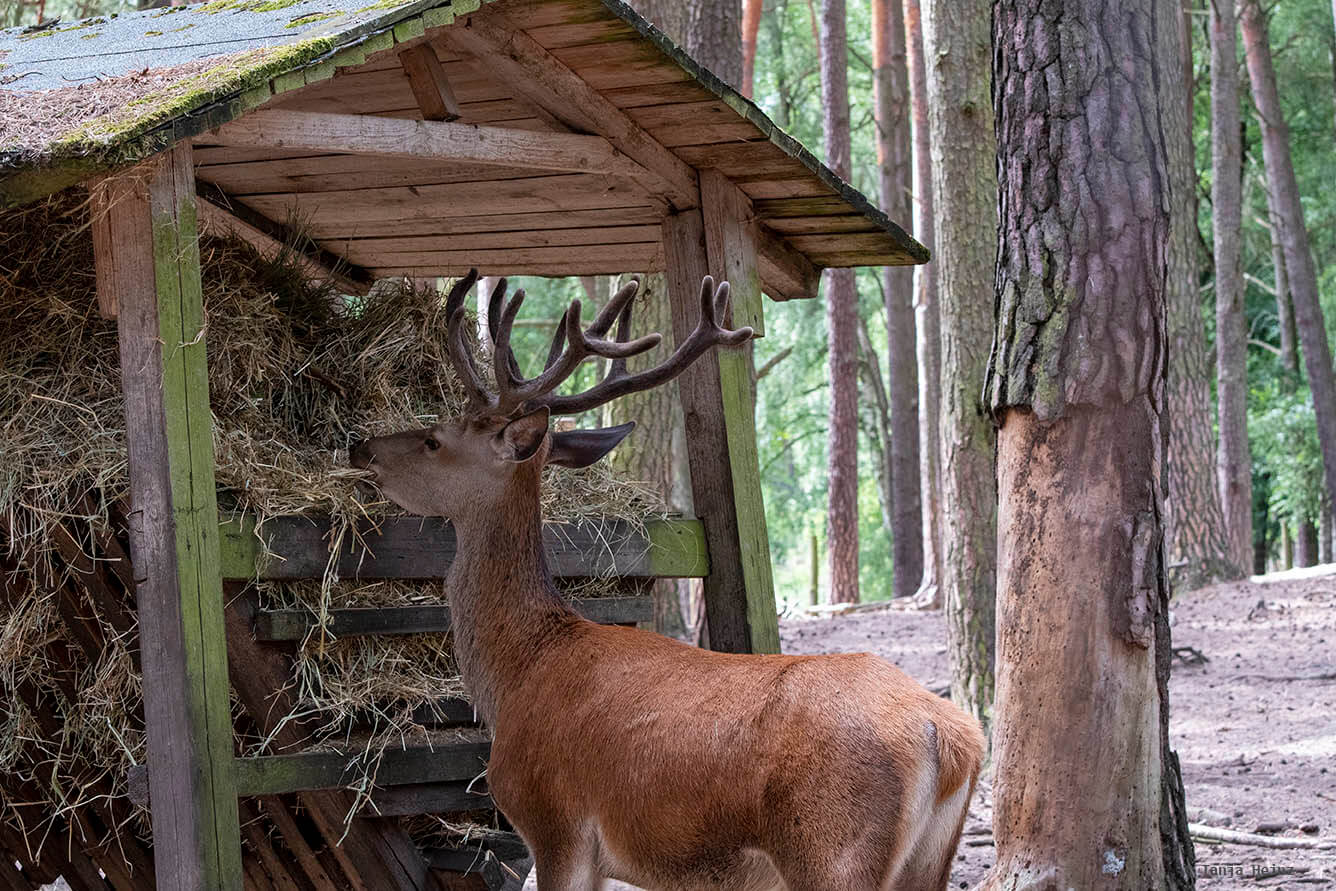
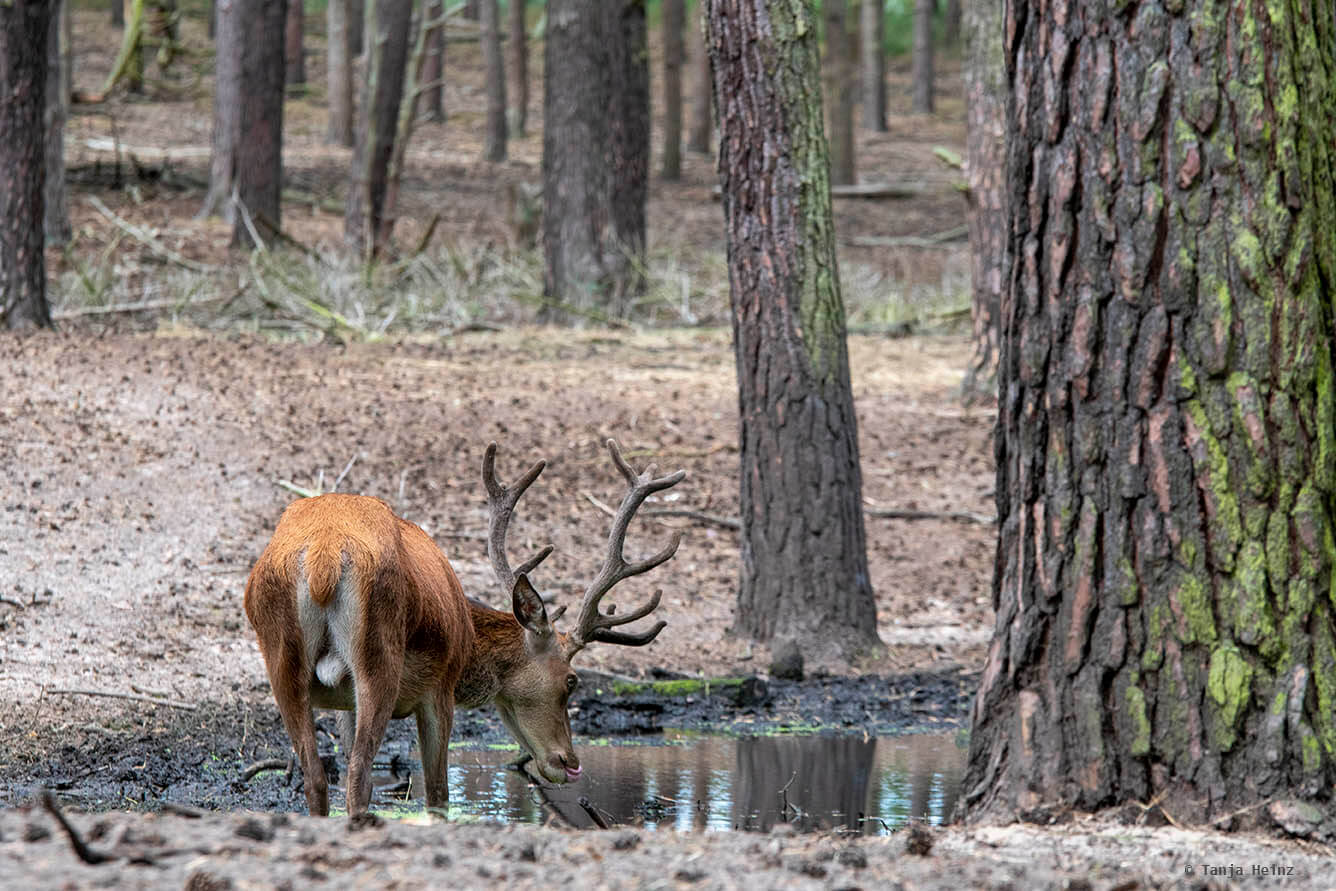
Interesting: Did you know that reed deer shed their antlers every year? In February males shed their antlers every year after a hormonal change. But interestingly, antlers become larger and larger from year to year.
Elk
Elks (Alces alces) are also quite impressive animals.
However, it was indeed not easy at all to spot the pair of elks in their vast enclosure. On my first round I could not spot neither the female nor the male.
At the beginning I had not the greatest hopes to spot the elks at all in their enclosure. They could have been hidden anywhere in the forest. Furthermore, midday had already passed and I thought that the elks were probably taking a rest in the afternoon. Maybe anywhere hidden in the shrubs?
Anyway, at the end I was lucky!
One of the elks - the female - moved to a pond and lay down, while the male seemingly enjoyed the attention he got from the visitors. Unfortunately, it was on the other side of the enclosure, and thus, I could observe both of them just from afar.
But luckily, later I walked another round along the elk enclosure and spotted both of them in the forest. Now they showed up in front of me and I could observe them close up. I admired them and was impressed by their size.
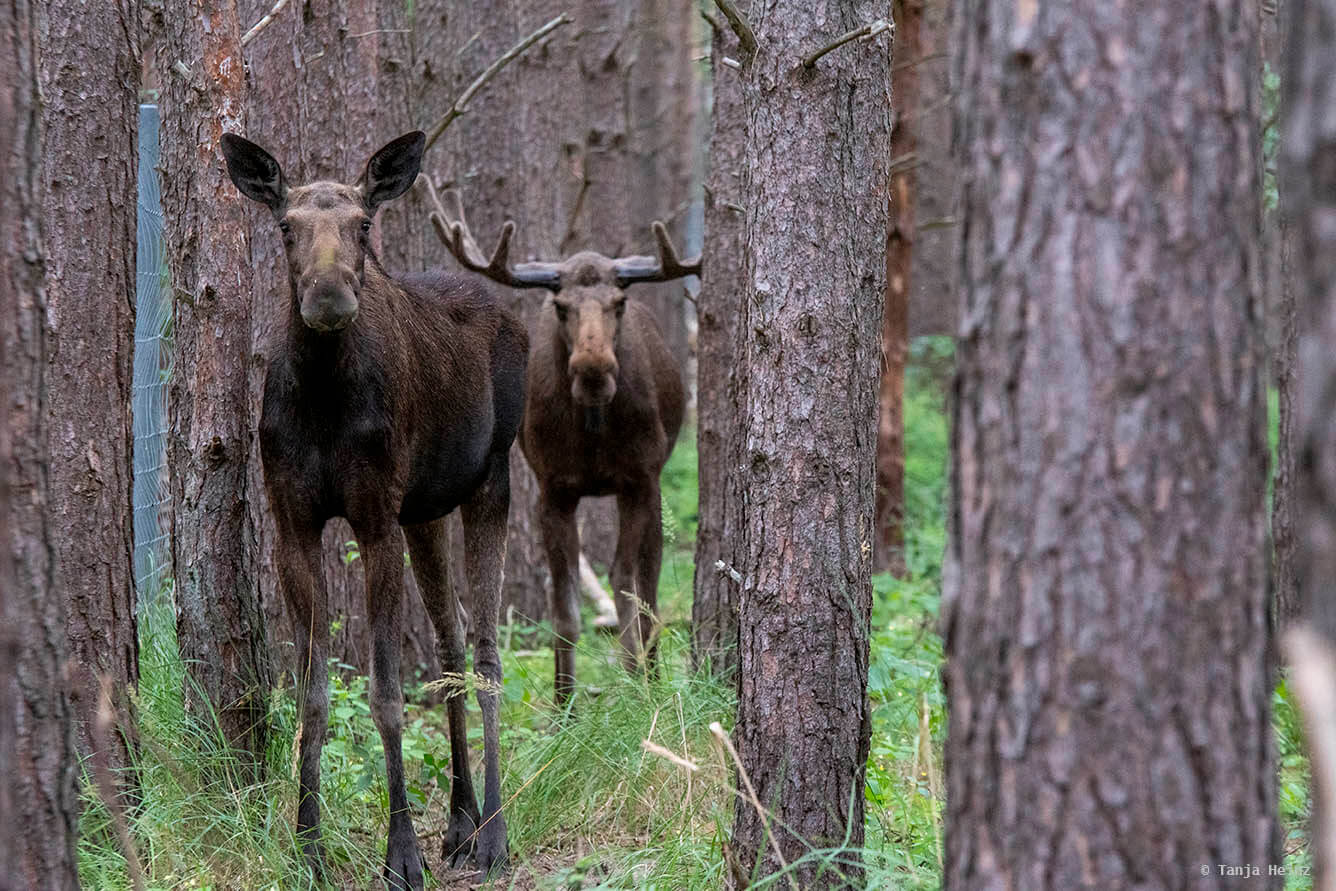
Interesting: Did you know that elks are the largest living deer? With a height of up to 2.30 meters they are larger than, for example, red deer. However, similar to red deer, among elks only males develop antlers. Interestingly, elks are able to run up to 60 km/h. In the wild they can reach an age of up to 20 years.
Eurasian otter
For me it was quite amusing to watch the Eurasian otters.
Similar to the elks, I couldn't find any otter on my first round. Dense vegetation and fences along the path made it almost impossible to look into the enclosure of the Eurasian otters. But again, I have to mention that this enclosure was in my opinion in an exemplary manner as there were so many options to withdraw for the animals.
However, I only saw the Eurasian otters on my second round along the otter enclosure, because an animal care attendant was feeding them. When feeding time, all otters emerge from their hiding places. One otter was brave enough and dared to get out of the water.
Thus, at the end I could observe quite many Eurasian otters on my visit in the wildlife park Schorfheide and I was quite delighted to see these rather crepuscular and nocturnal semiaquatic mammals.
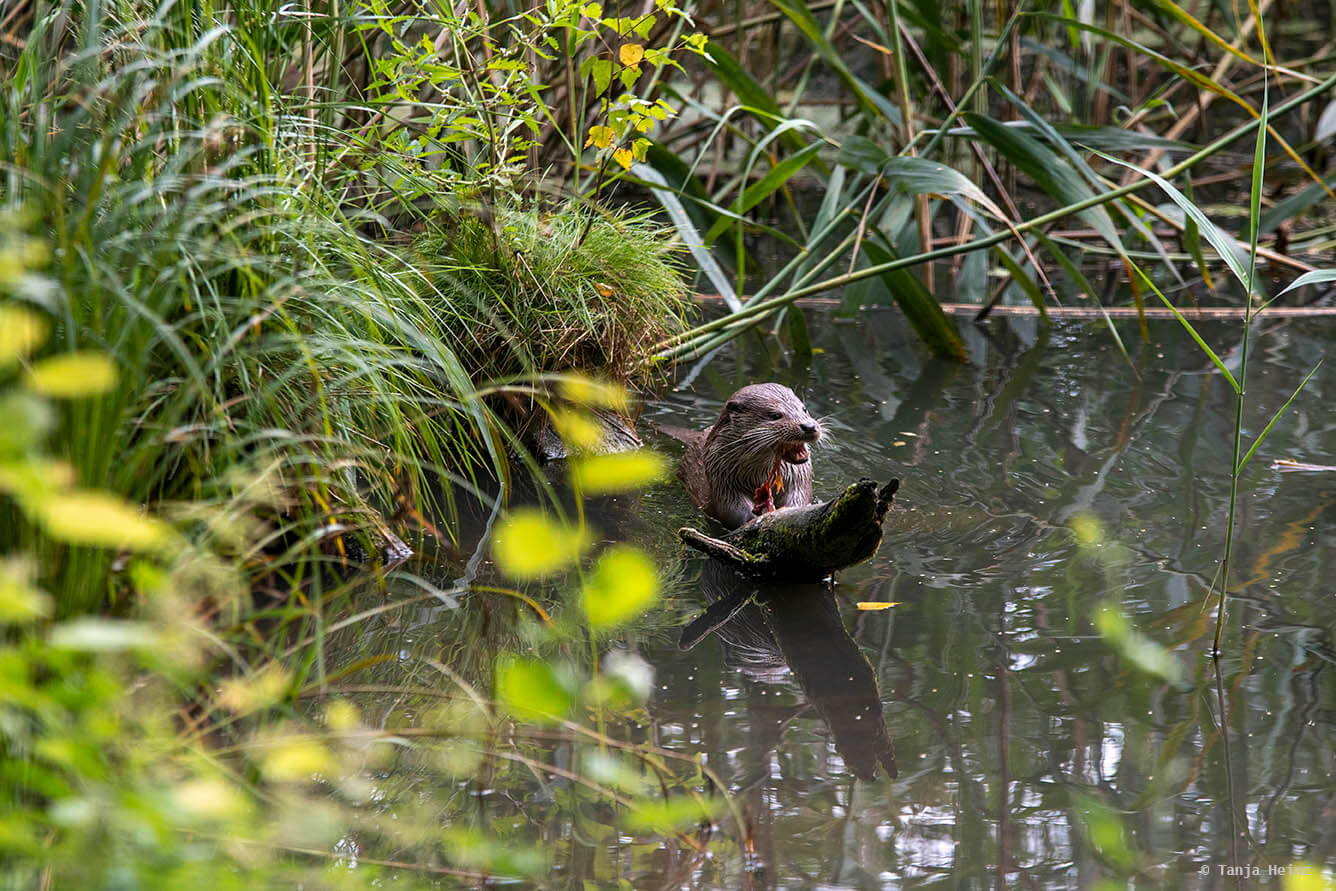
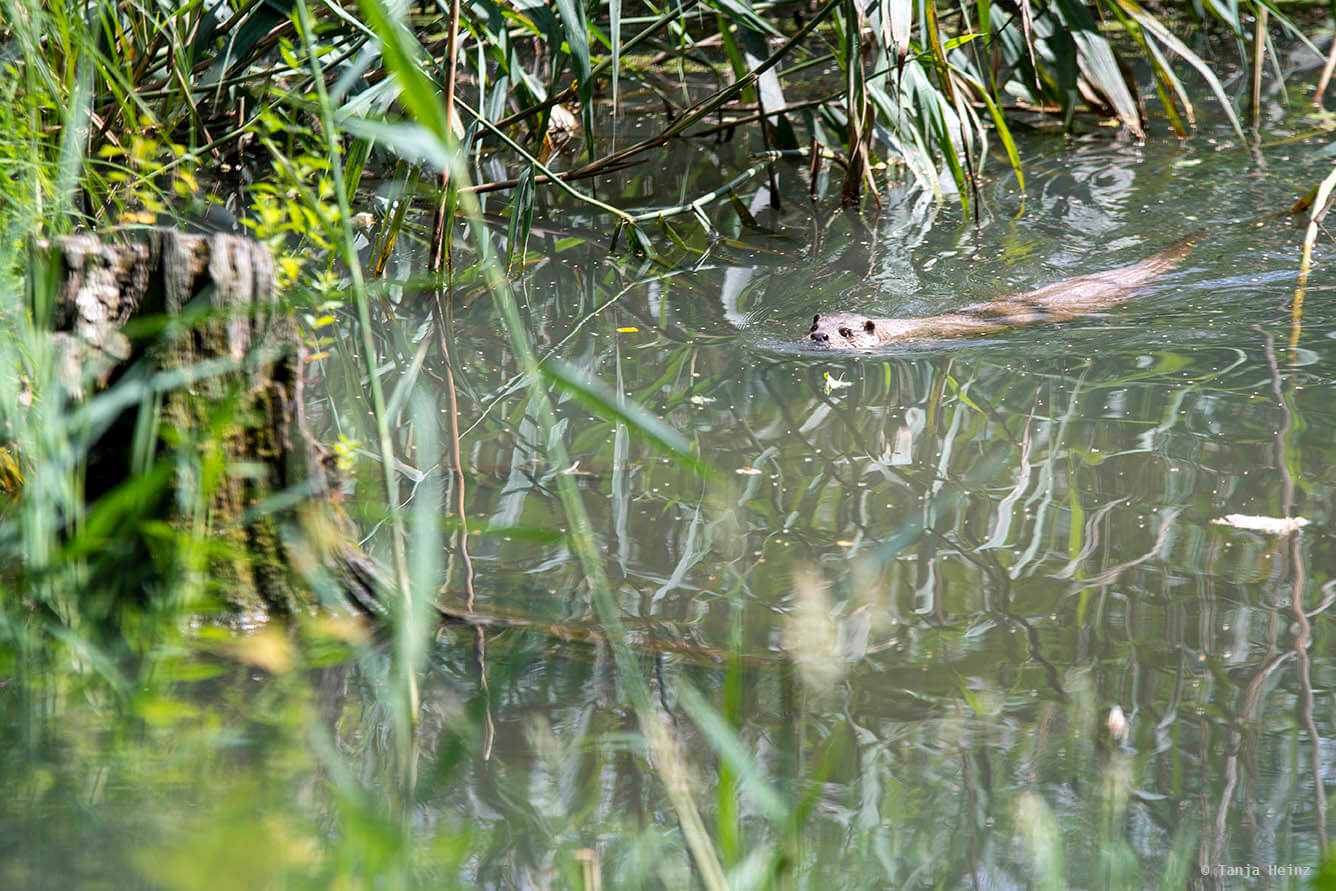
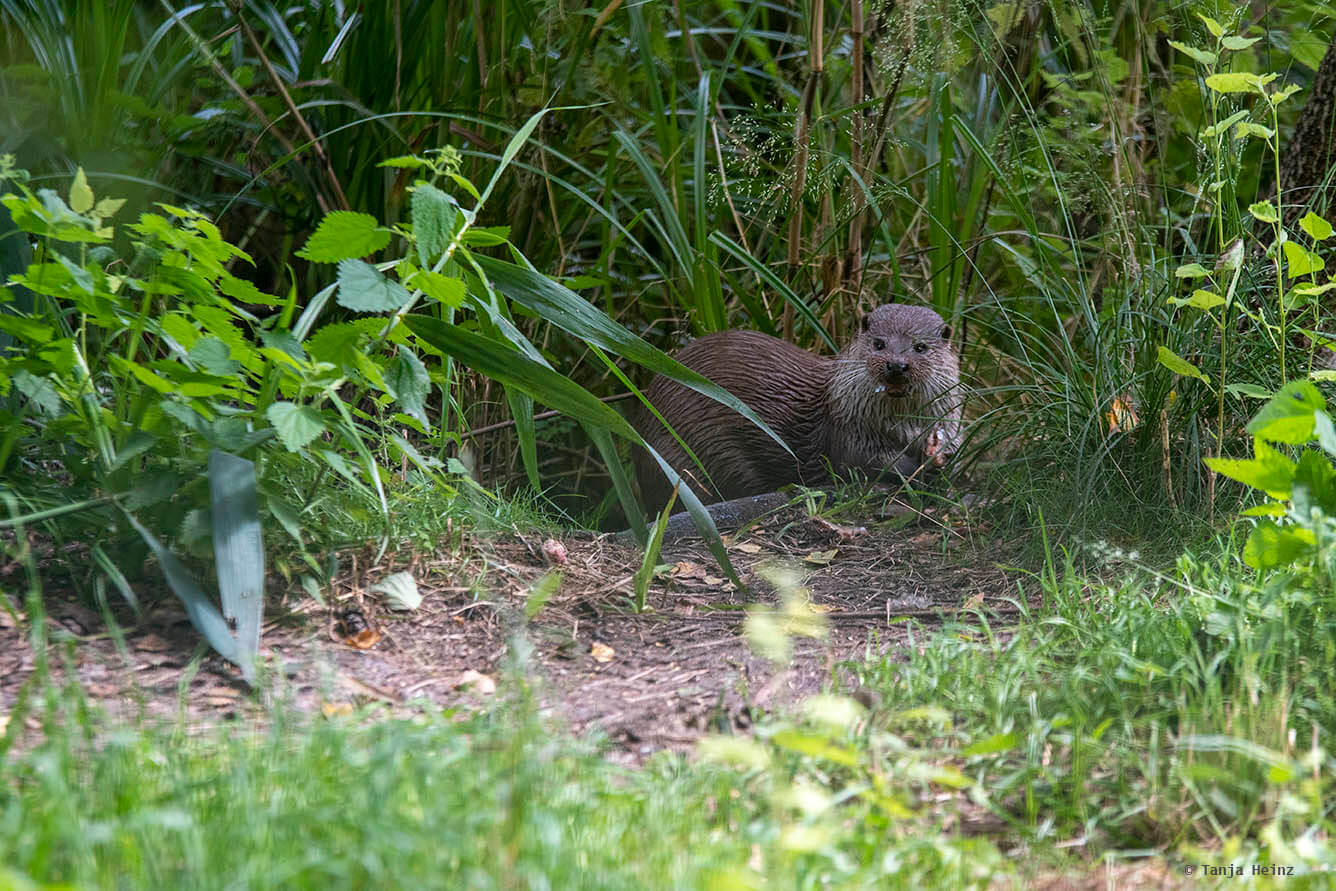
Interesting: Did you know that Eurasian otters are able to stay under water for up to 8 minutes and that they can dive up to 15 meters? Eurasian otters are furthermore fast swimmers and they can reach a velocity of up to 12 km/h. Interesting to know is also that these animals may travel up to 10 km in one night.
Konik horse (Panje horse)
Konik horses are like the Przewalski's horses very beautiful animals.
The Konik horse is an East European horse breed. Konik is Polish and means "small horse". These horses are like the sheep country breeds mentioned previously very hardy and adapted to live outside all year.
Although Konik horses seem rather inconspicuous with their grey coat color, I was in admiration by the beauty of these animals.
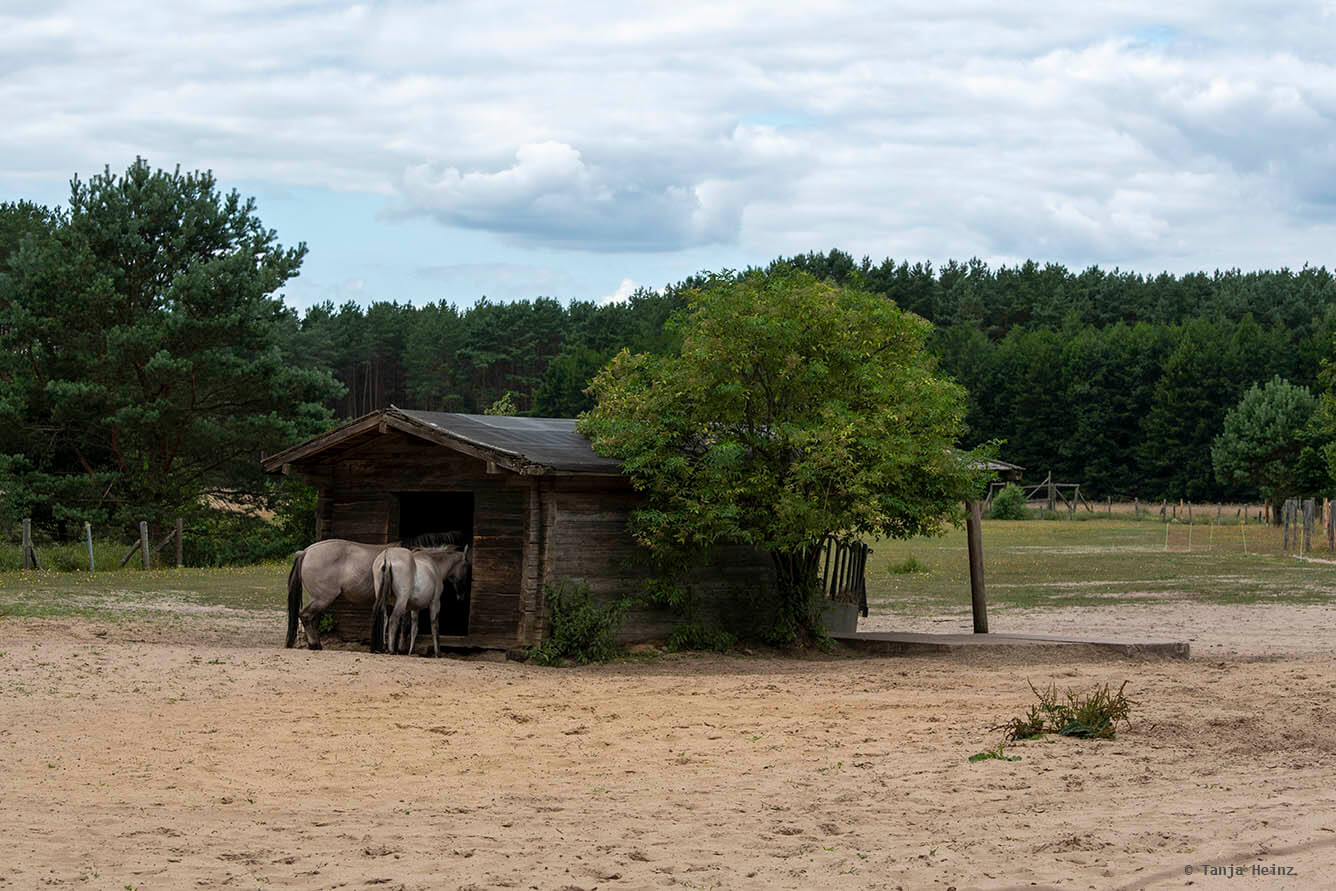
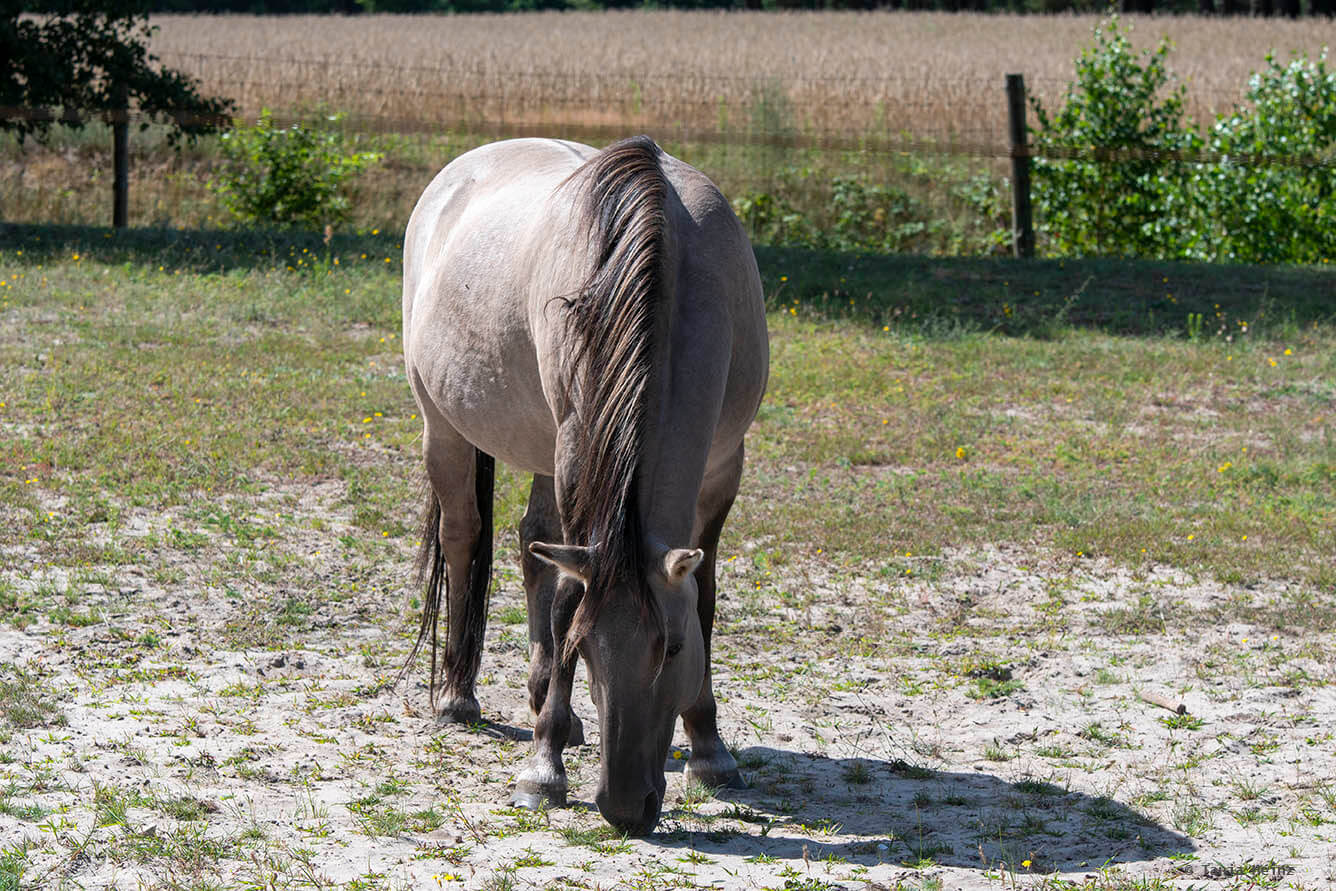
Wild boar
Strong, impressive and sometimes very spectacular are wild boars. I watched some wild boars in one of the enclosures in the wildlife park Schorfheide as well. Of course, there was a fence between the visitors and these animals, because an encounter with these animals in the wild might not be safe. Especially when fighting wild boars use all their energy to combat its rival. I have already seen one of these fights between two males and was impressed and frightened at the same time by their strengths.
Nevertheless, on my visit in the wildlife park Schorfheide the wild boars in the enclosure were not at all in the mood of a fight. On the contrary, while one wild boar was looking for a comfortable place anywhere in the ground, another wild boar was busy digging a hole into the ground.
It felt like a peaceful day. I stayed in front of the wild boar enclosure for some time and just watched them.
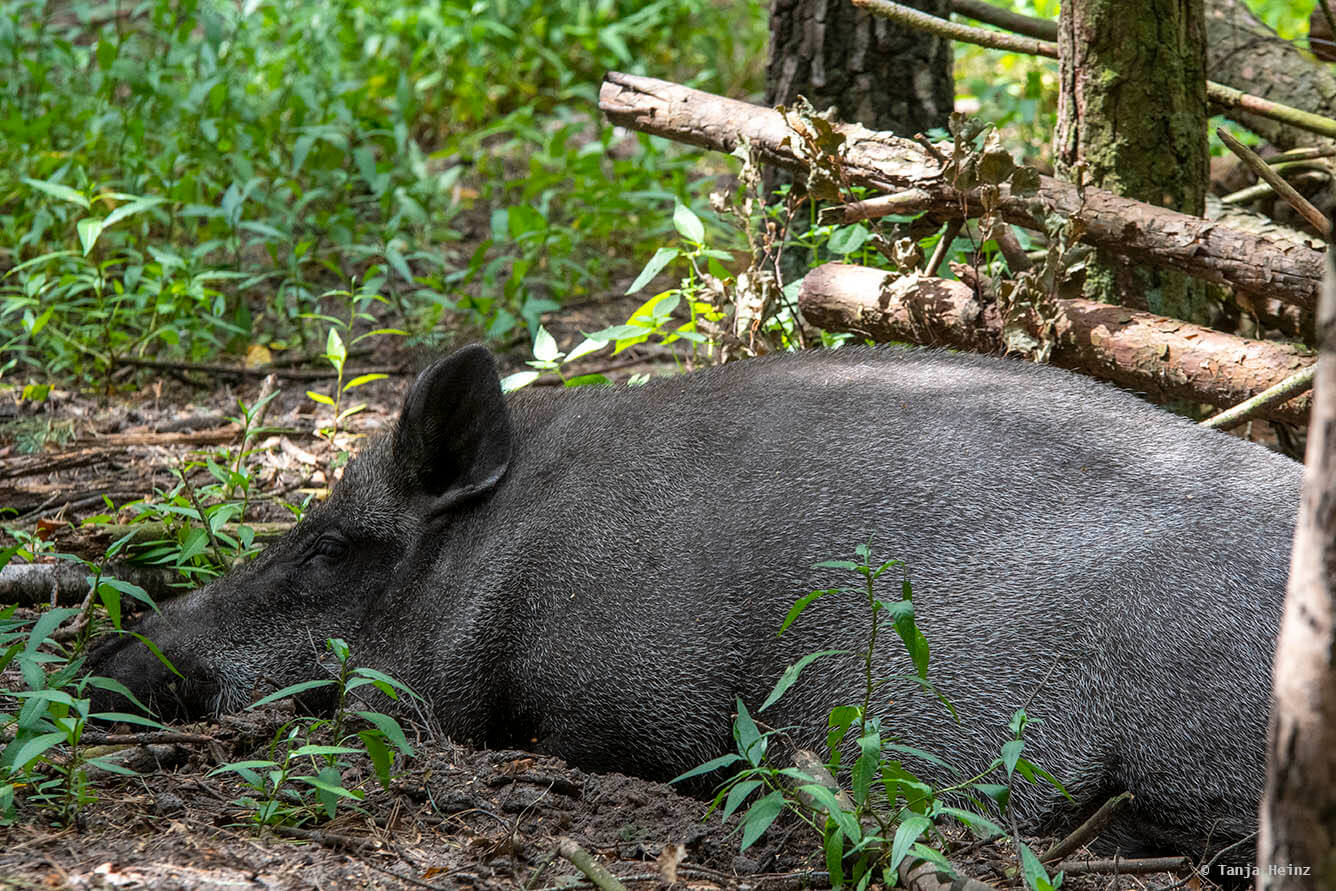
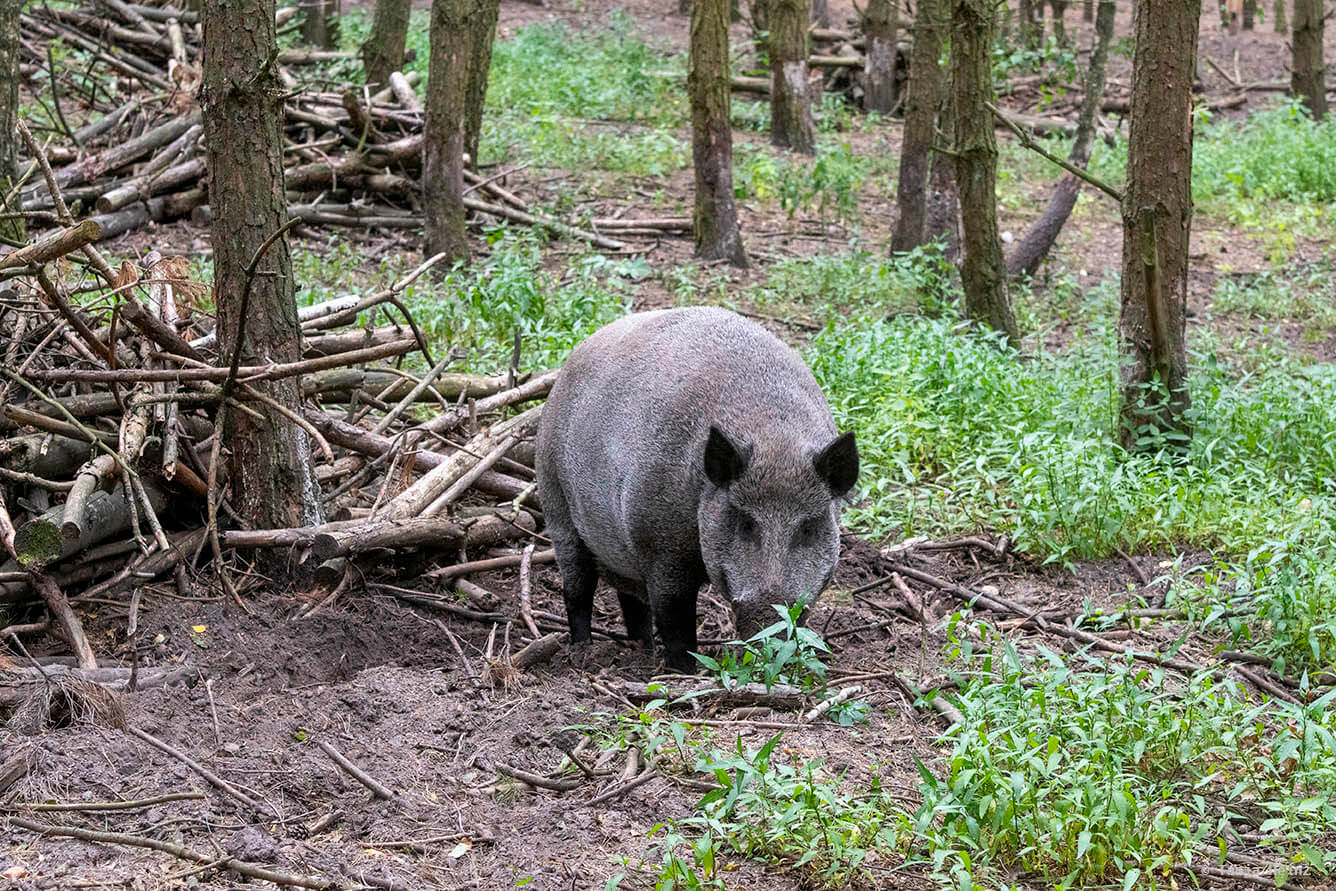
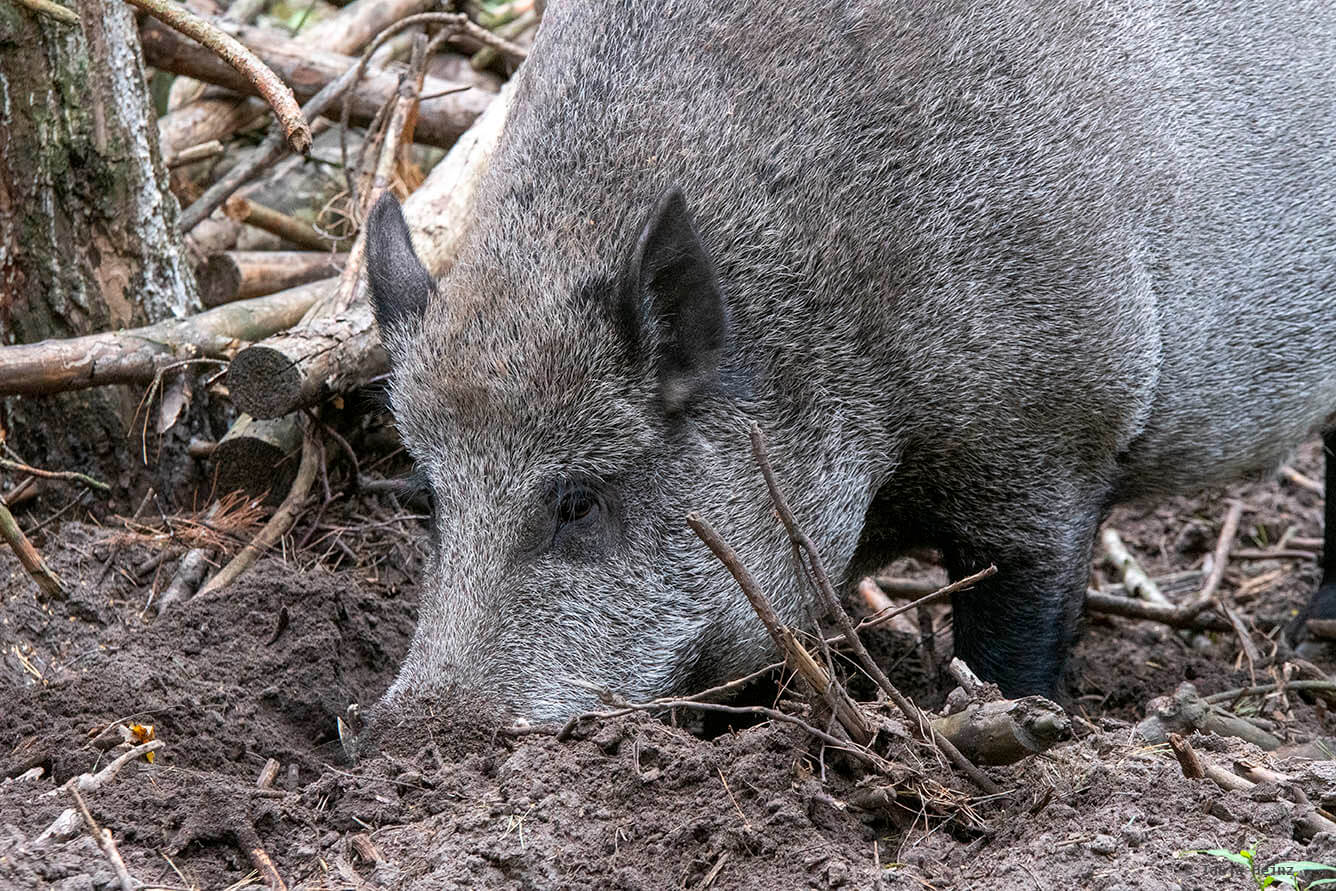
Interesting: Did you know that females of wild boars often live together in small groups? One of these groups usually consists of several females and their male or female one-year-old offspring.
European bison
The European bison was also a quite impressive animal to watch. The European and American bison are very closely related.
In the wildlife park Schorfheide is an area where all visitors are asked to be especially quiet. From afar I saw three bison on the meadow. I watched this small group for a short moment and left again.
The European bison is primarily active in the morning and evening hours. However, I still could observe some of them more active feeding on grass.
The enclosure for the European bison was especially vast.
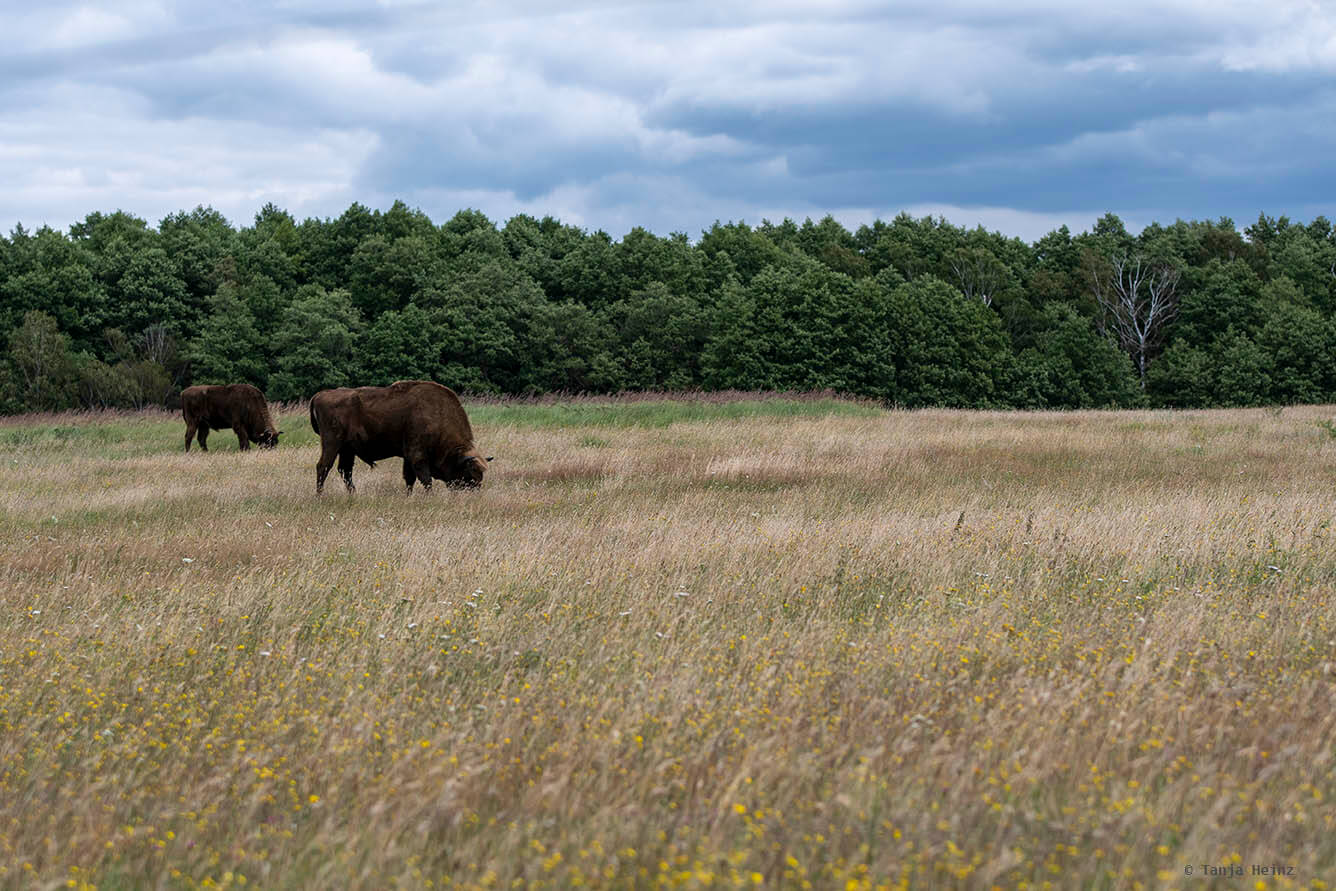
Interesting: Did you know that the European bison can weigh up to 1200 kg and that they are the heaviest terrestrial mammals in Europe? Although the European bison is a ruminant and exclusively feeds on plants like leaves, branches, shoots and bark of trees and shrubs, these animals are quite spectacular animals with an impressive weight. Therefore, these animals usually prefer mixed forests as a habitat.
Heck cattle
The wildlife park Schorfheide is committed to care for native fauna. However, they not only care for wildlife, but also for endangered livestock breed.
Another endangered livestock breed in the wildlife park Schorfheide is the Heck cattle. The Heck cattle was originally widely distributed in Europe, Middle and Central Asia, and North Africa.
These animals are descendants of the aurochs. Aurochs are extinct since 1627. By the way, the aurochs is the ancestor of most domestic cattle.
On the day of my visit, it was very quiet among the Heck cattle. Seemingly, they were relaxing and sleeping on the meadow.
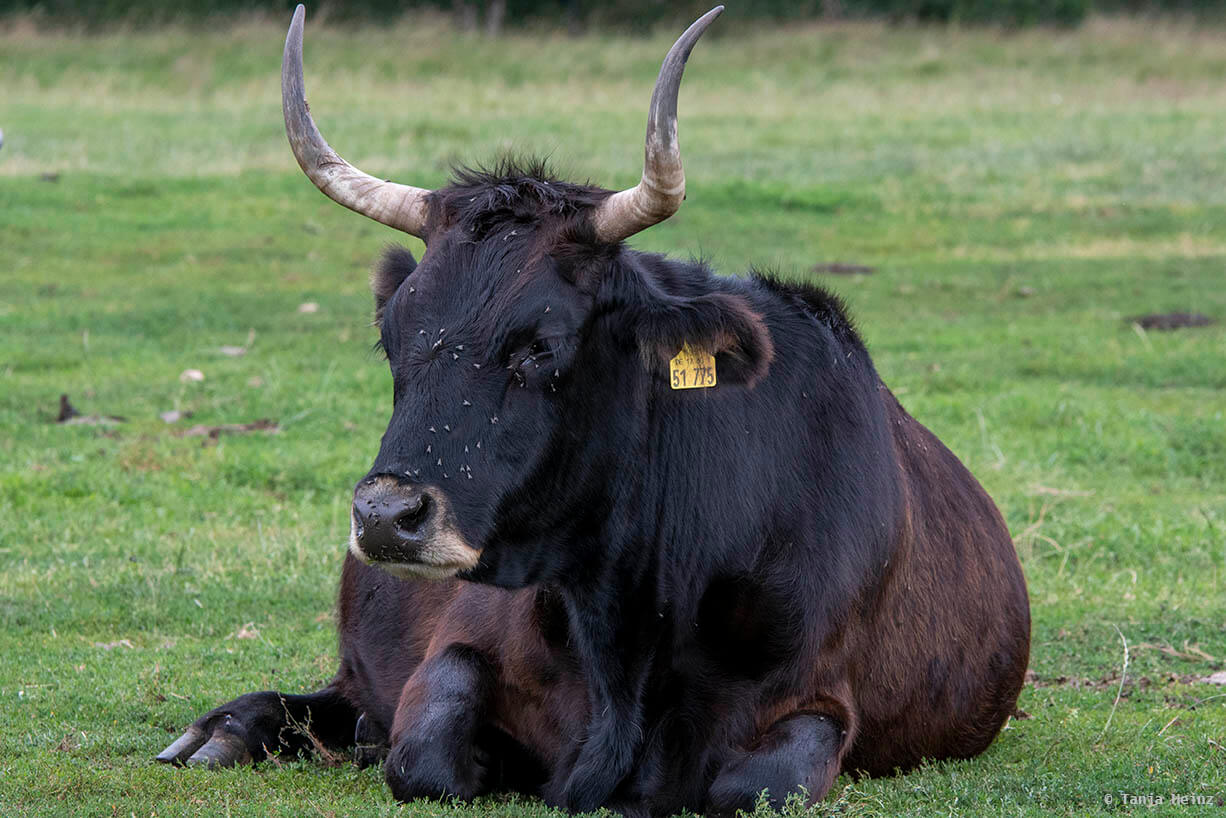
White park cattle
The white park cattle is like the Heck cattle an endangered livestock breed and on the Red List. According to the information I got in the wildlife park Schorfheide, the white park is the white breed of the now extinct dark aurochs. But importantly, the white park is no albino!
Apparently, the white park cattle is a very rare breed and there are just 20 individuals of them in Germany.
The white park is originally from Great Britain and the oldest domestic breed of cattle.
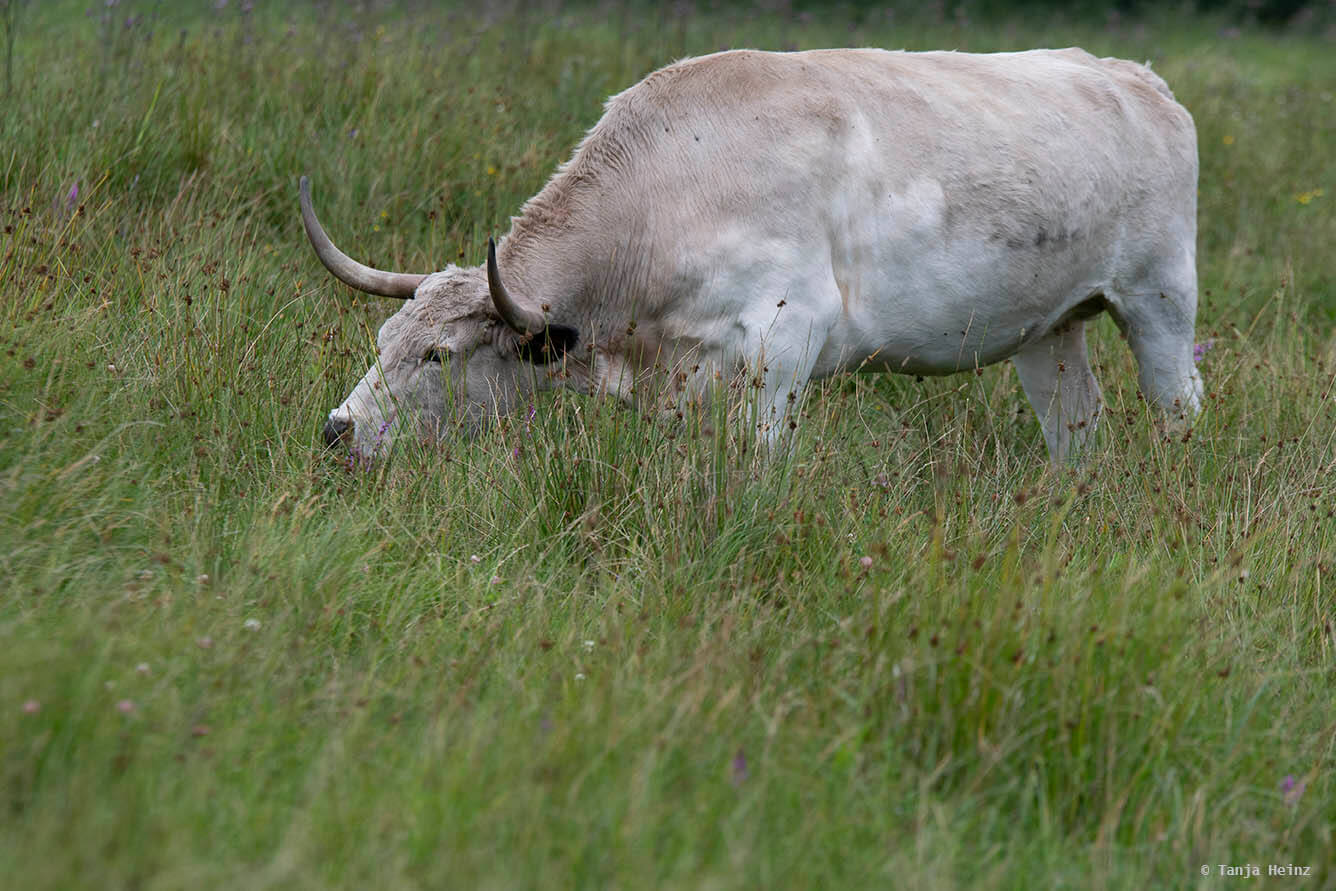
Information: The area in the wildlife park Schorfheide is quite extensive. Especially, if you want to see the Konik horses, the European bison and the cattle you need to walk long distances. Furthermore, not all paths are surrounded by trees, and thus, visitors are exposed to the sun in these areas on a hot day. The enclosures of the wild boars, European otters and wolves, in contrast, are located in the forested areas.
Swallow-bellied mangalitsa
In the enclosure of the swallow-bellied mangalitsas I encountered a quite active and curious animal. A fence with a height of only about one meter separated me and the mangalitsa. Was this mangalitsa looking for something? I didn't know, but it seemed to be looking for something as it was moving its snout along the fence from one corner to the other. In one moment, it was very close and I could have touched the mangalitsa. But I didn't.
There are two differently colored mangalitsas in the wildlife park Schorfheide. The active mangalitsa was dark in color and is known as swallow-bellied mangalitsa.
The other mangalitsa is known as Hungarian curly coat or red mangalitsa and as the name already suggests with a rather reddish fur. Hidden in vegetation, the red mangalitsa was sleeping when I passed the enclosure.
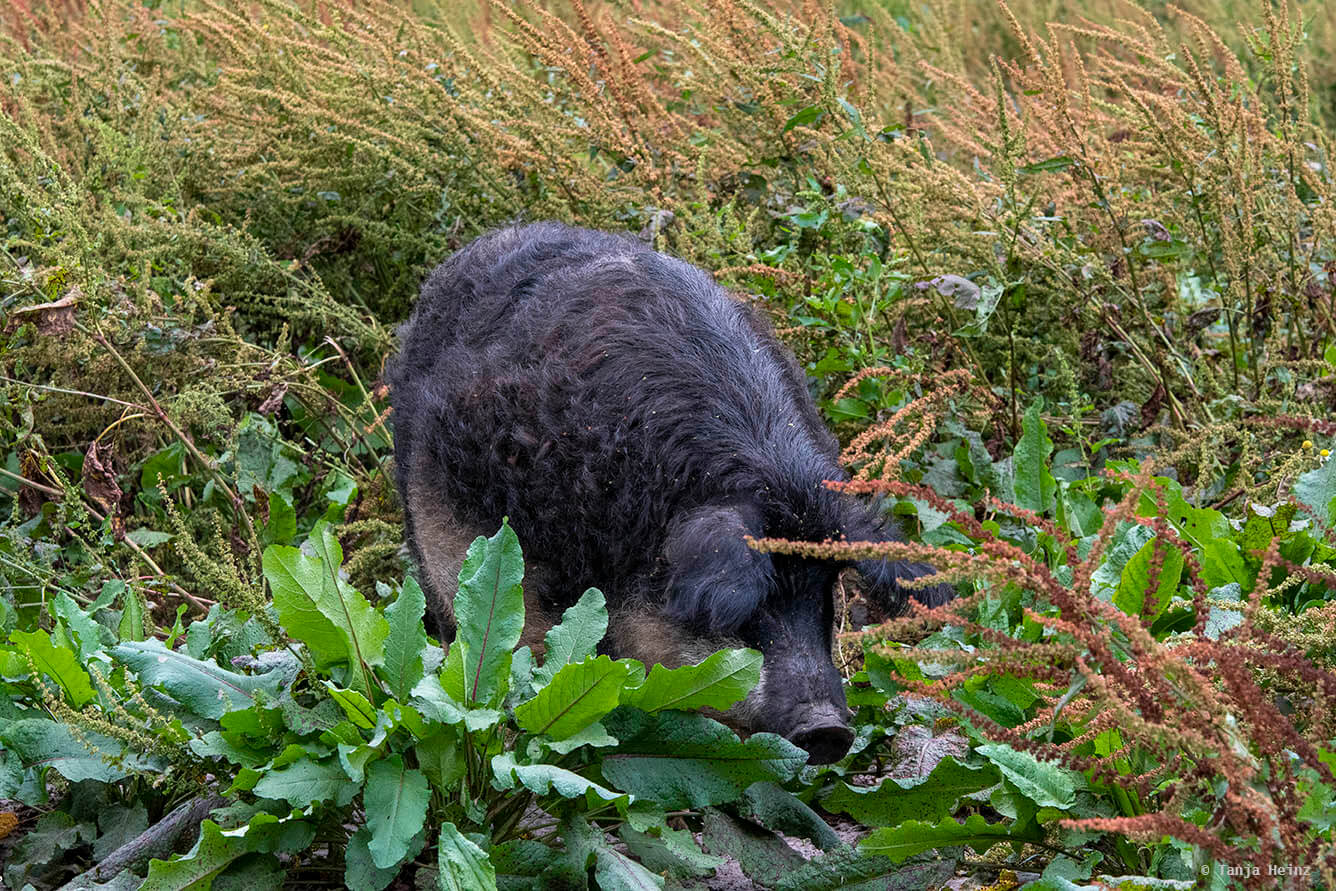
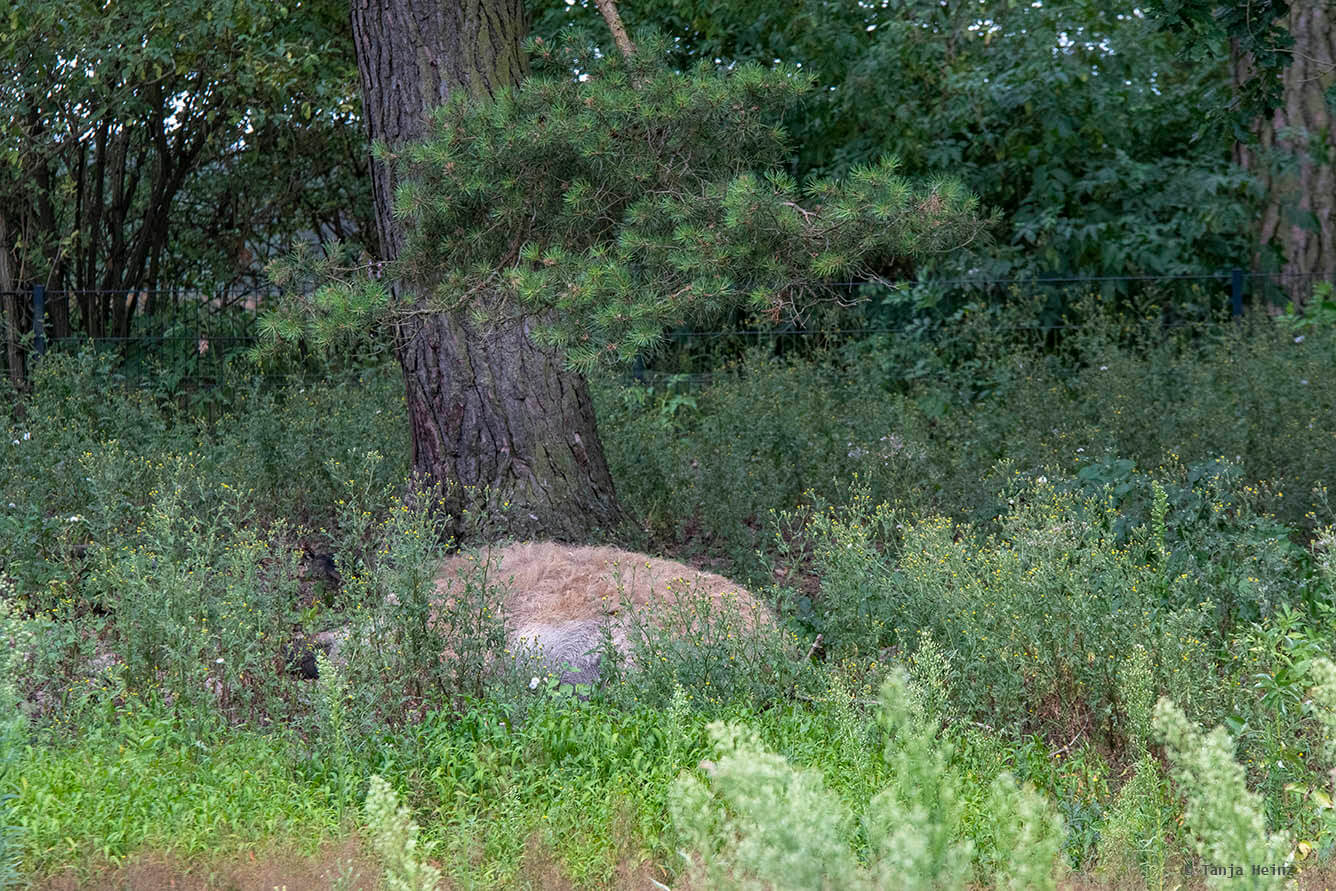
More animals in the wildlife park Schorfheide
Although I visited the wildlife park Schorfheide for a few hours, I could not see all animals in their enclosures.
For example, I didn't spot the lynx. I passed the lynx enclosure several times, however, I was not lucky. I neither saw them on the lookout tower nor at any other spot along the lynx enclosure. But I talked with other visitors, and apparently, there was a lynx showing up for a short moment.

I also couldn't spot any fallow deer or moufflon. At the entrance area I passed a raccoon enclosure, but again, I couldn't see any animal neither. Nevertheless, by all means I saw quite many animals and had a wonderful day in the wildlife park Schorfheide.
Information: The wildlife park Schorfheide is active in environmental education. For example, there are guided tours about the wolf. On the official website of the wildlife park is more information about these tours.
Of course, in the wildlife park Schorfheide you can spot many other small animals.
As I visited the wildlife park in summer, I could observe quite many butterflies and beetles.
In the middle of the wildlife park, you will encounter an insect hotel.
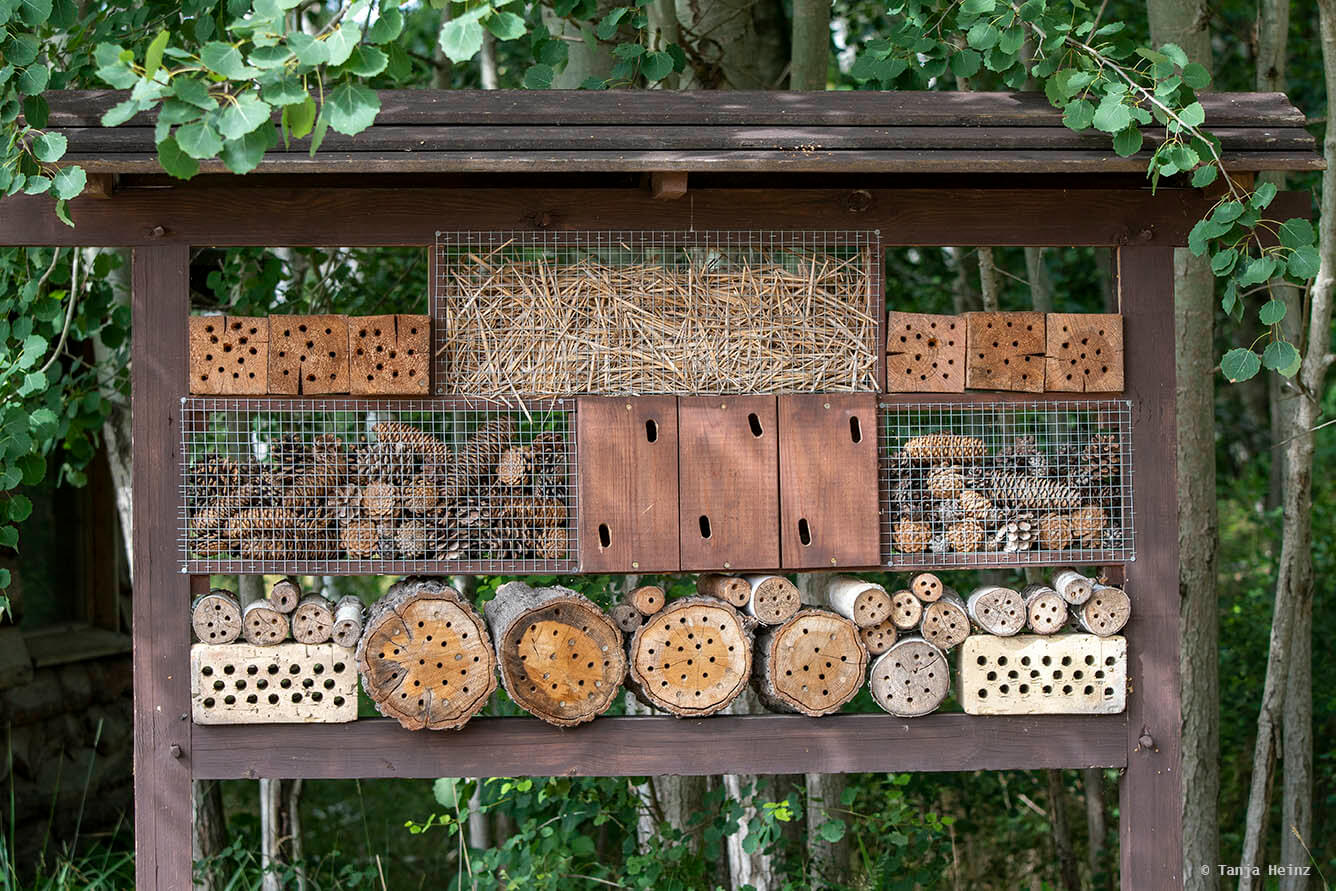
The wildlife park Schorfheide is a beautiful place to relax and enjoy. But it is also a place to learn and experience native fauna. I indeed spent a wonderful day in the wildlife park Schorfheide!
Practical information
How to get to the wildlife park Schorfheide
The wildlife park Schorfheide is easy to reach by public transportation. I took the city train to the train station Karow. In Karow I got in the train RB27 and got off in Groß Schönebeck.
The address of the wildlife park is: Wildpark Schorfheide, Prenzlauer Straße 16, 16244 Schorfheide (Groß Schönebeck).
I paid 6 Euros for one train ticket.
Tip: Don't forget money in cash. On the day of my visit it was not possible to pay the entry fee with a bank card.
In Groß Schönebeck is is possible to take a bus (line 904) to the wildlife park or walk a path of about 3 kilometers.
I walked from the train station in Groß Schönebeck to the entrance of the wildlife park Schönheide.
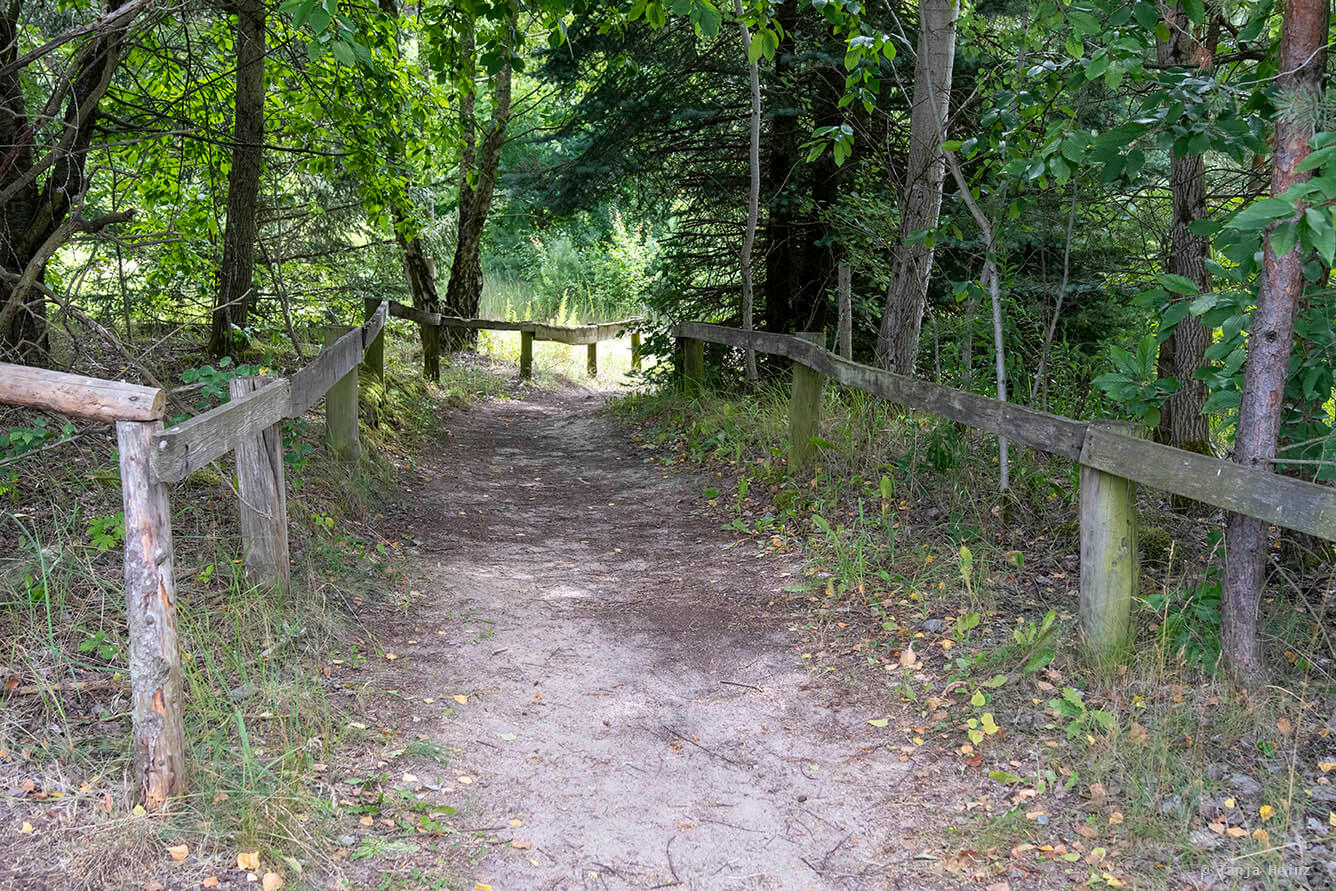

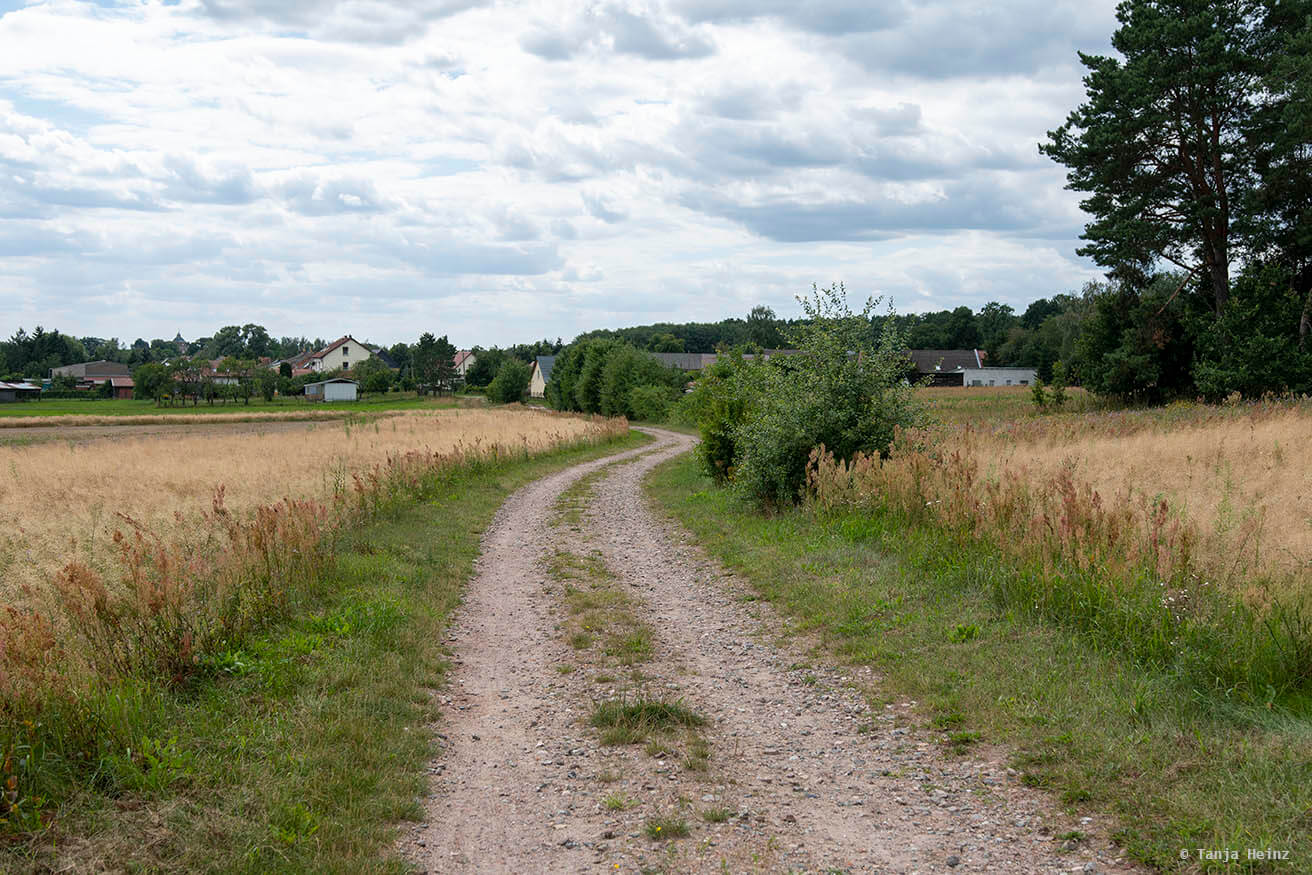
Entrance fees and opening hours
On the website of the wildlife park Schorfheide is more detailed information about how to get to the wildlife park, but also about entrance fees and opening hours.
I paid 9 Euros for the entrance.
Usually, the wildlife park opens at 9 a.m. and closes at 7 p.m. However, as it was during the Covid19 pandemic, the wildlife park opened only until 5 p.m. Thus, I recommend to check the opening hours on the official website of the park.
Information: I visited the wildlife park Schorfheide in 2020. Thus, the text refers to my visit in that year. Please visit the official website of the wildlife park in order to get up-to-date information.
More information
Official website of the wildlife park Schorfheide
More about the biosphere reserve Schorfheide-Chorin on Visit Berlin
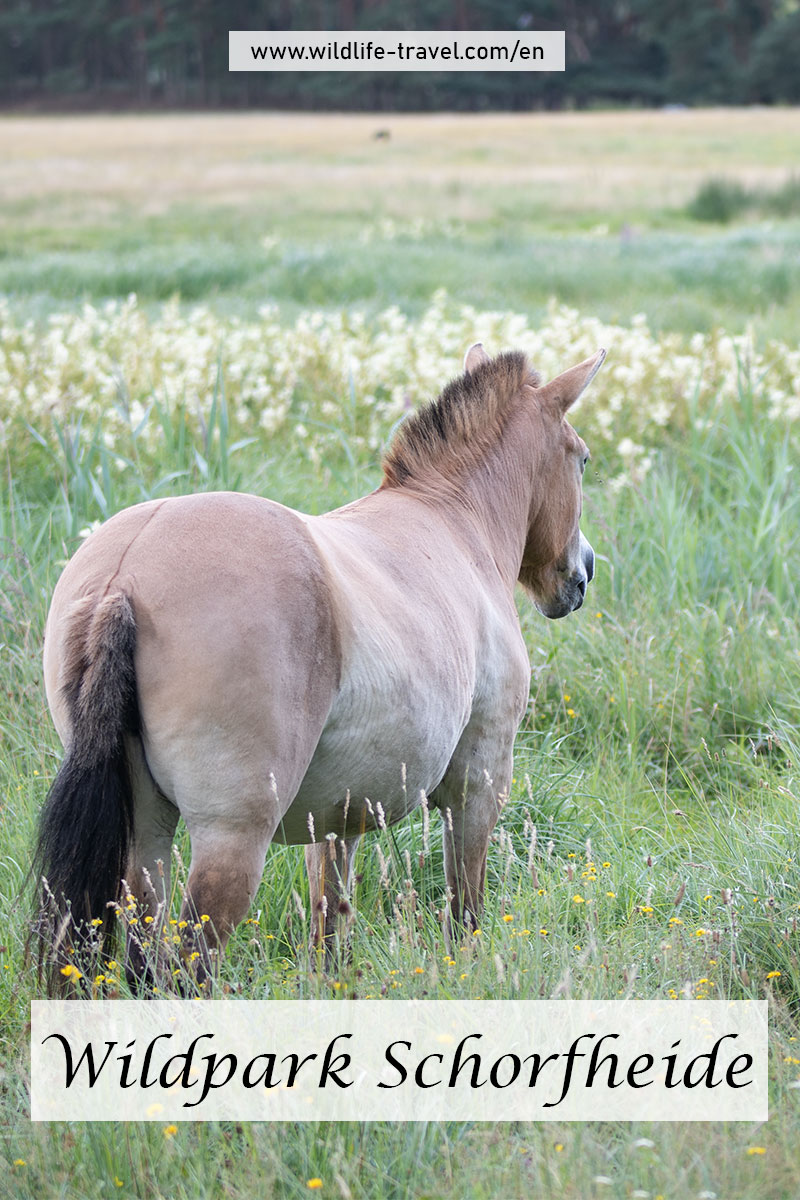
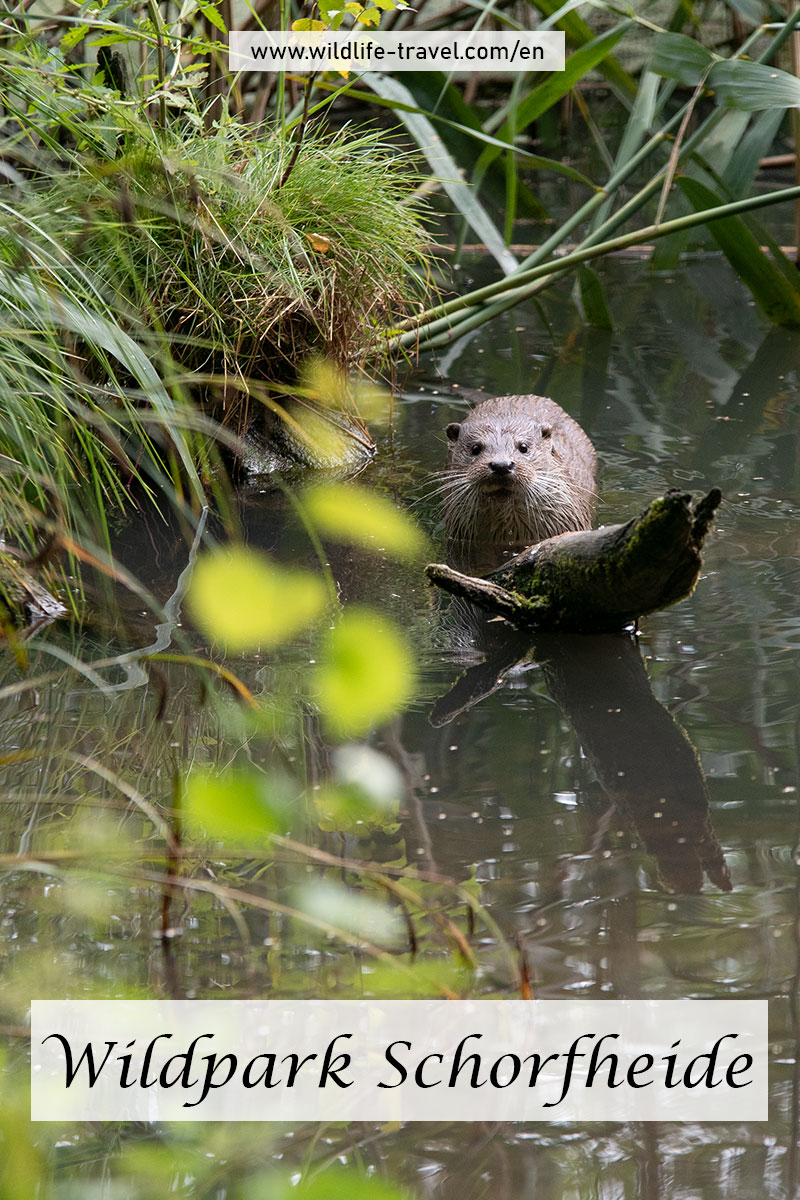
Do you know the wildlife park Schorfheide? If yes, which animals did you see? Or is there any other wildlife park you know and like? Please let me know in the comments!
